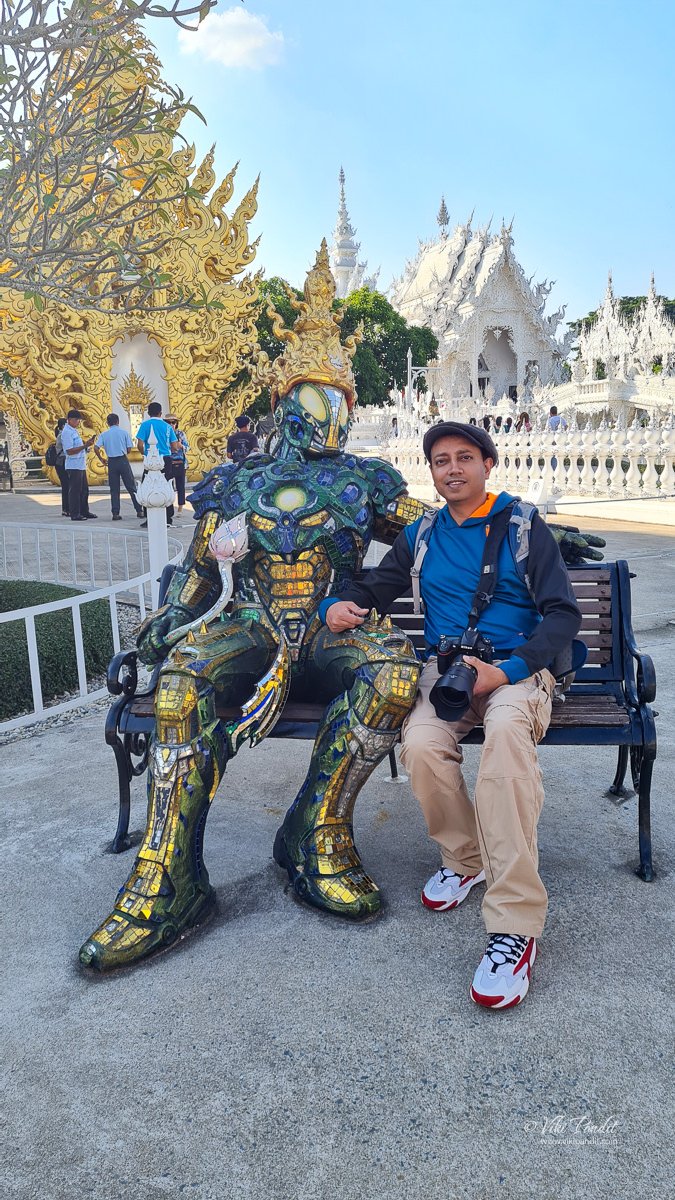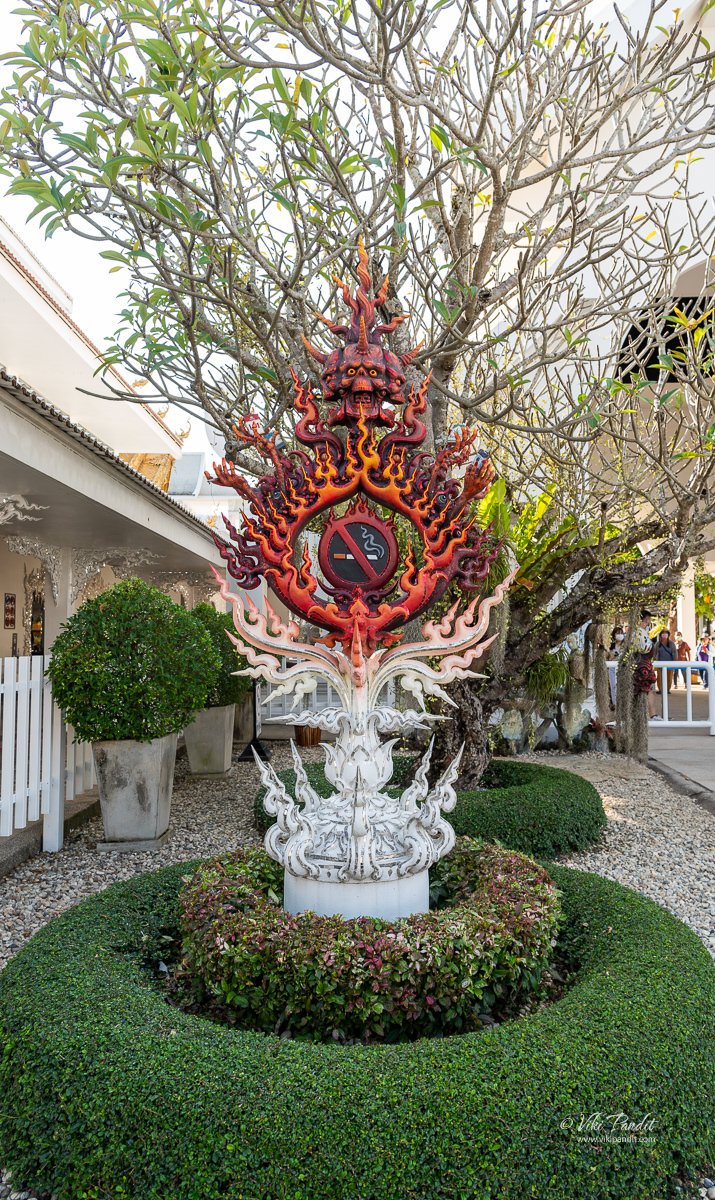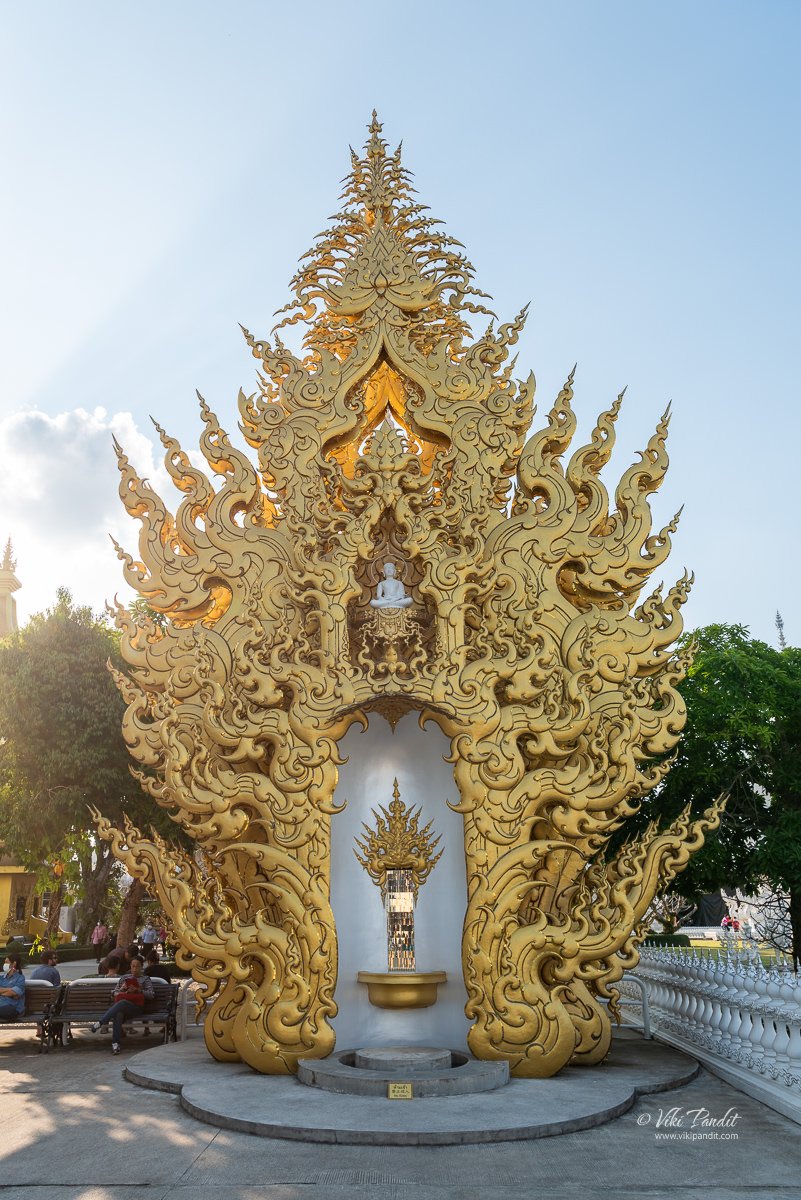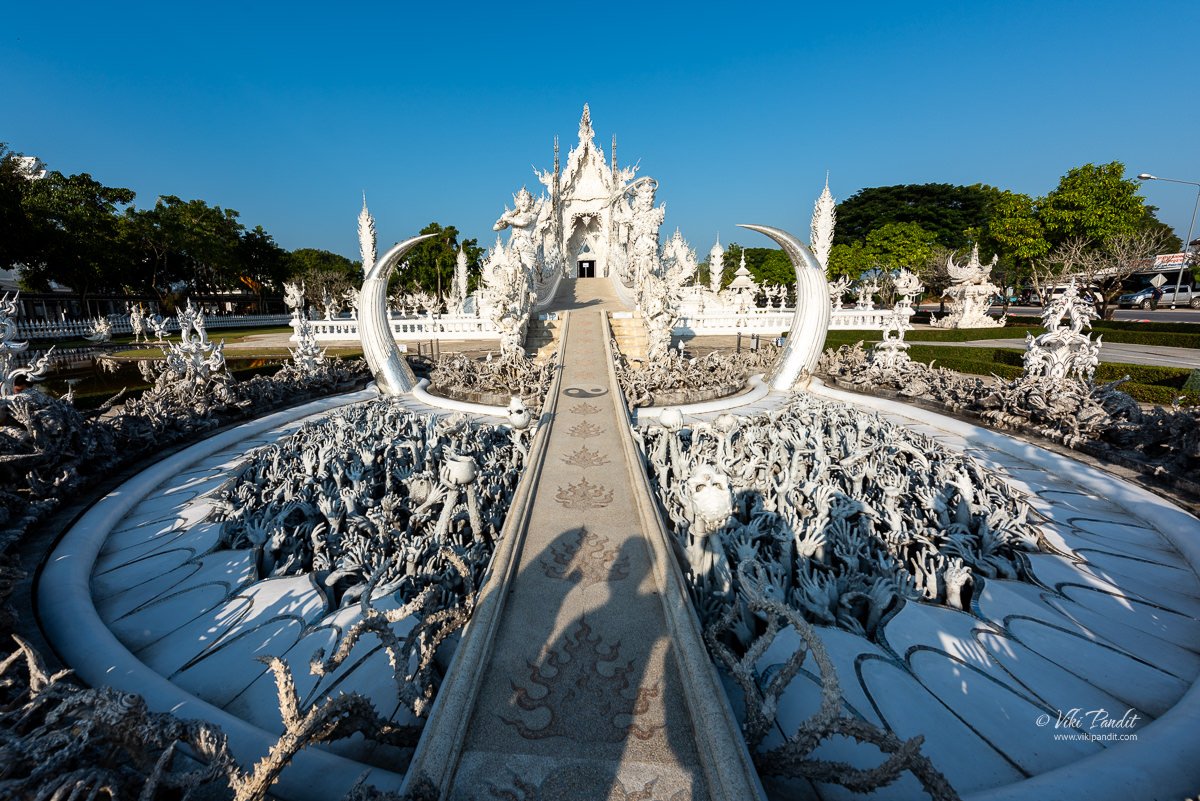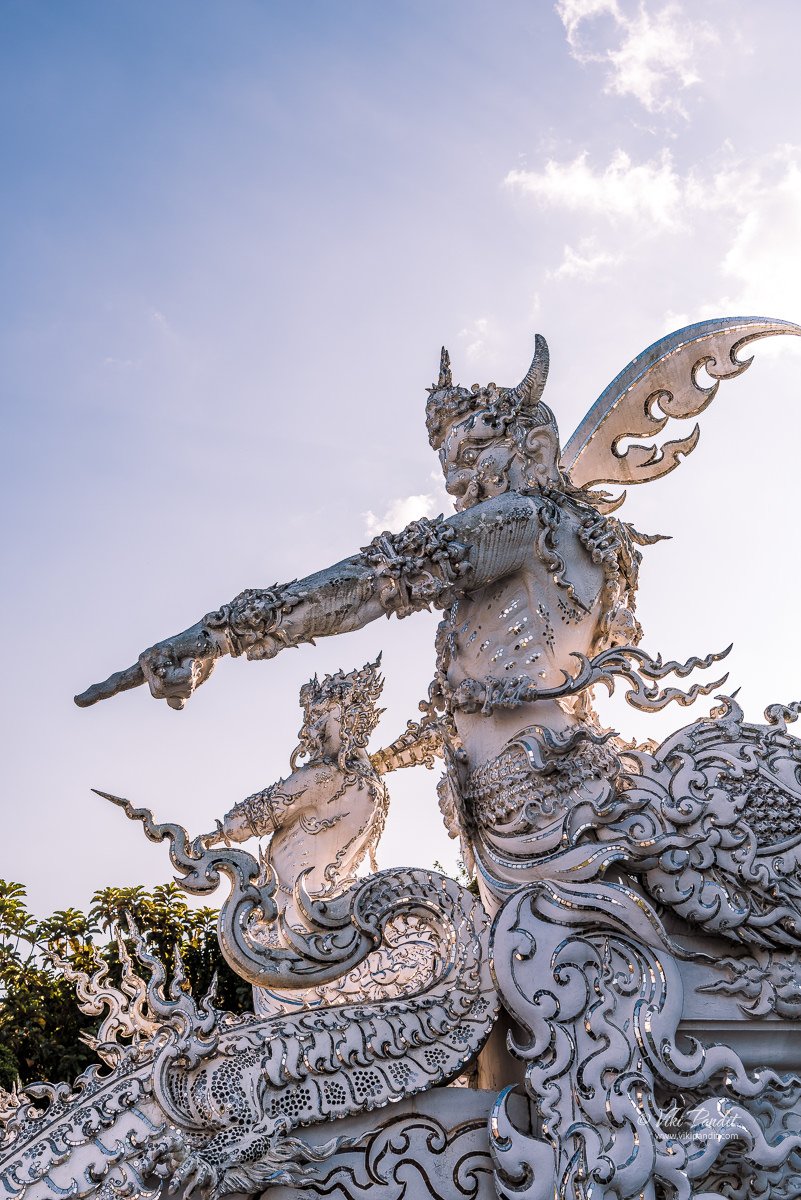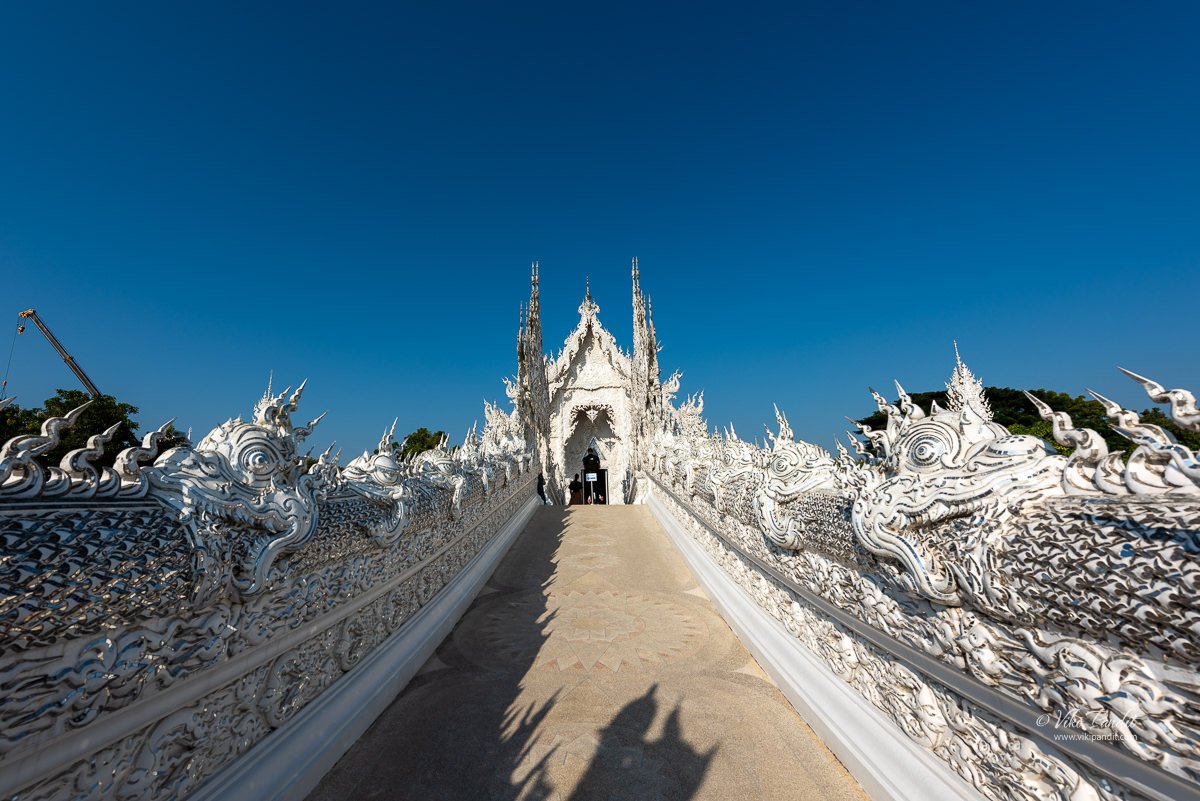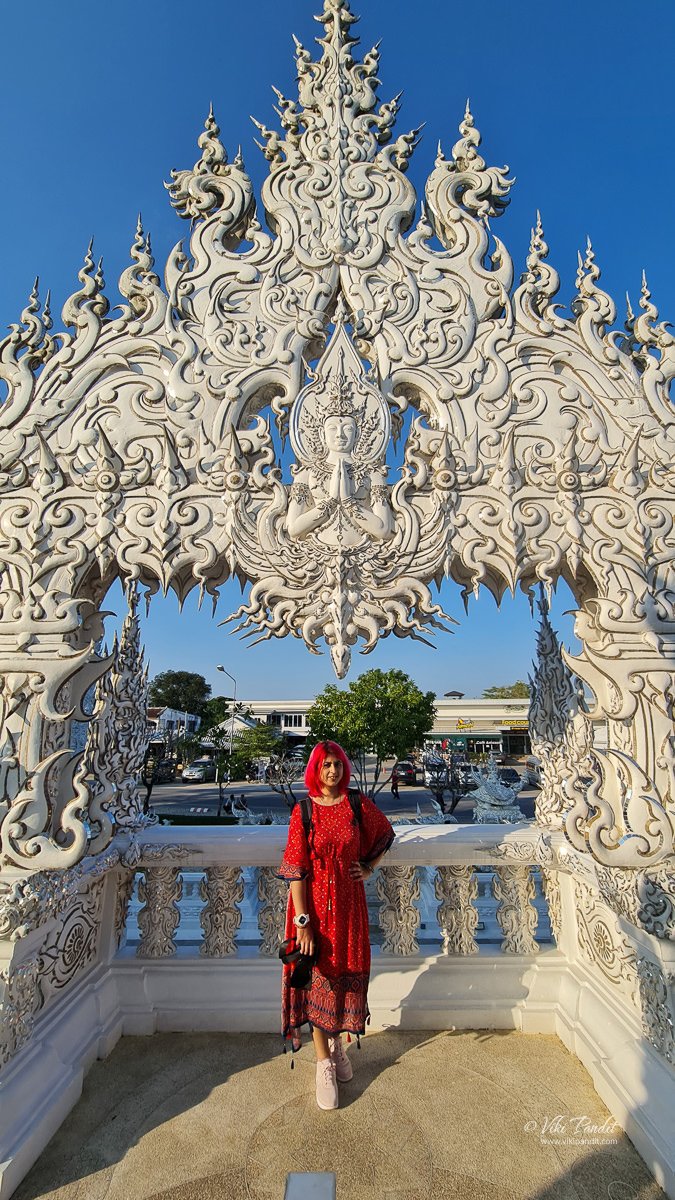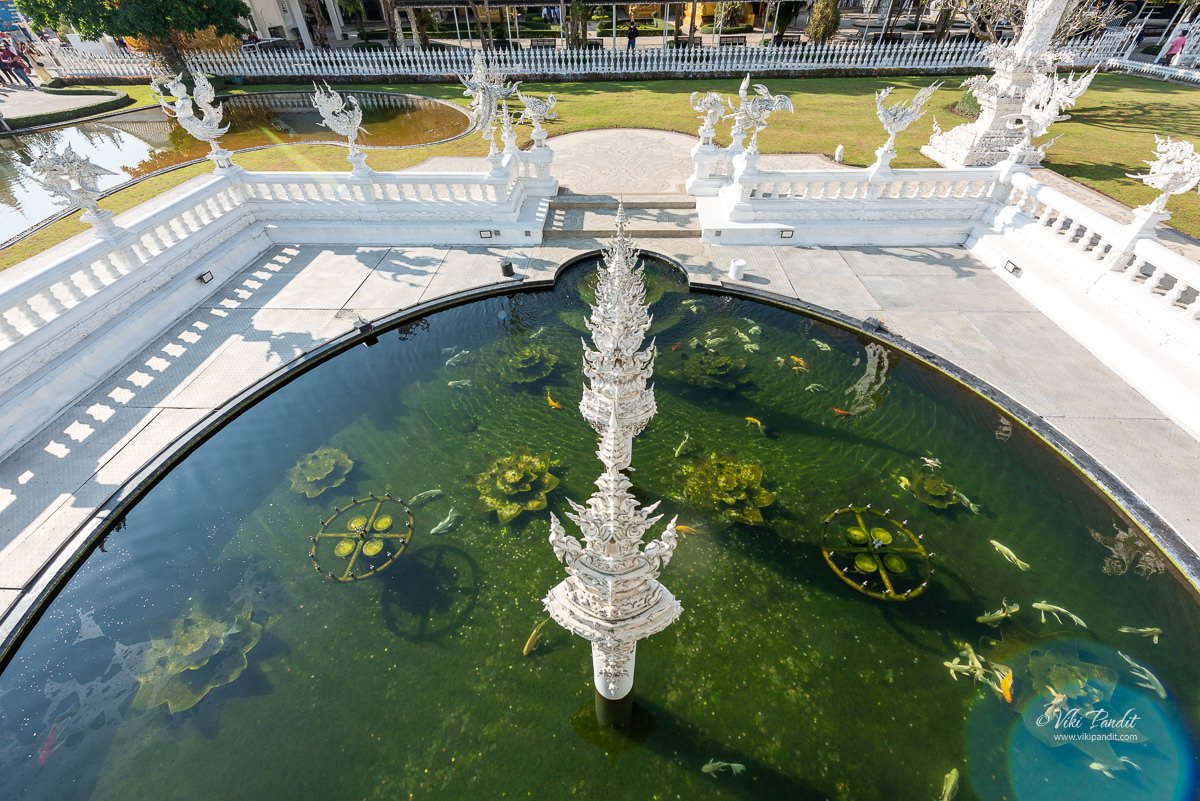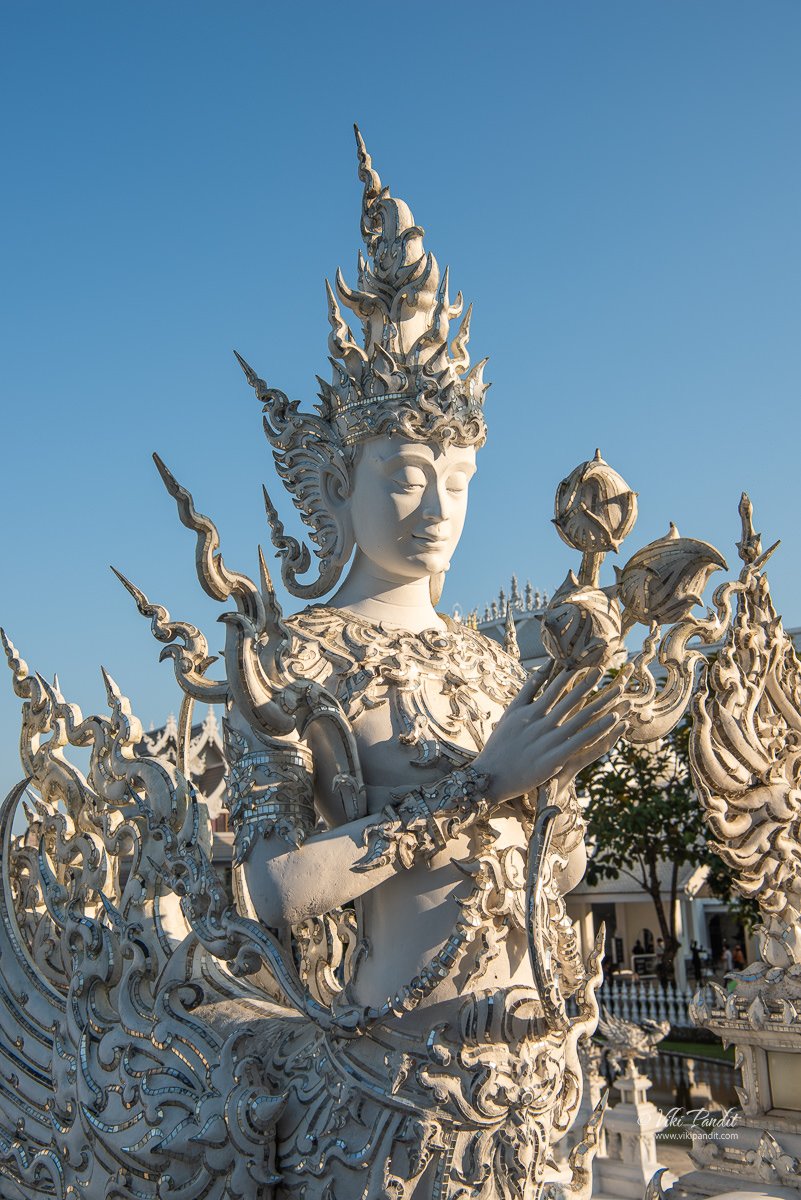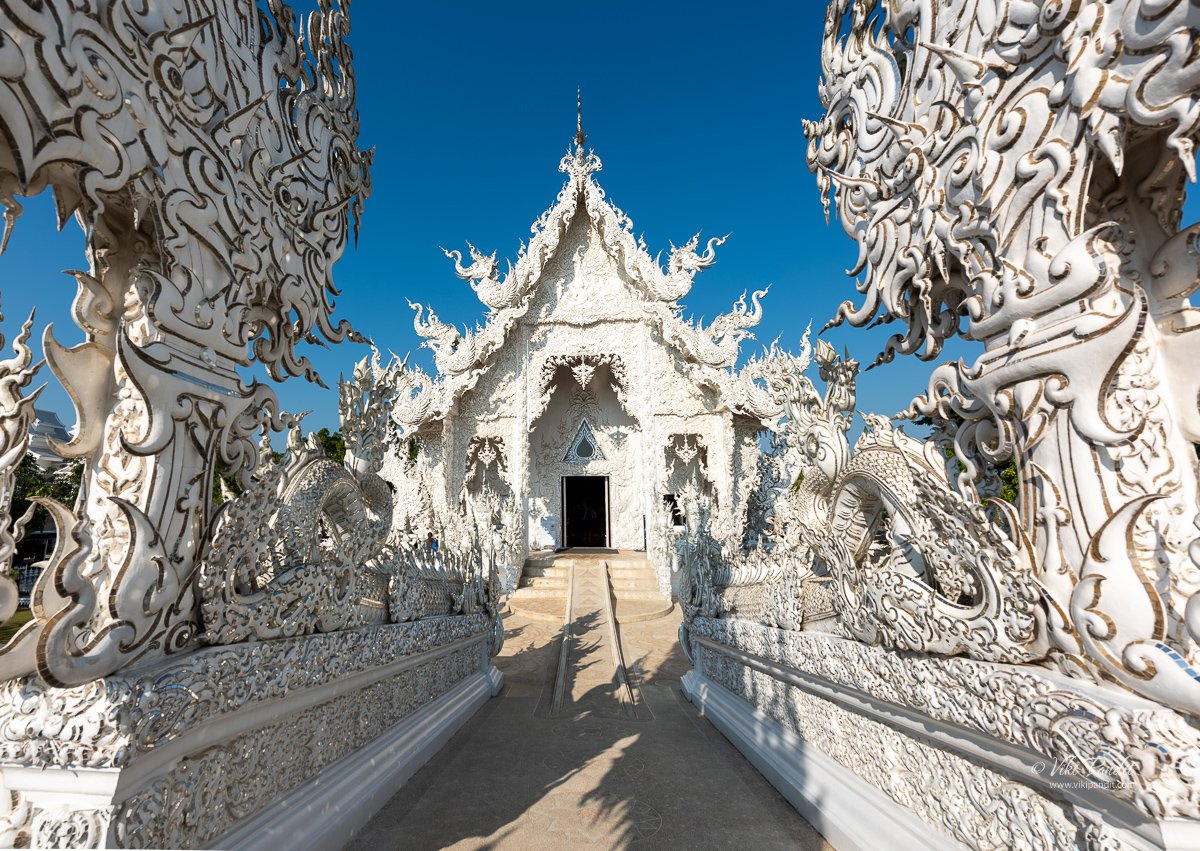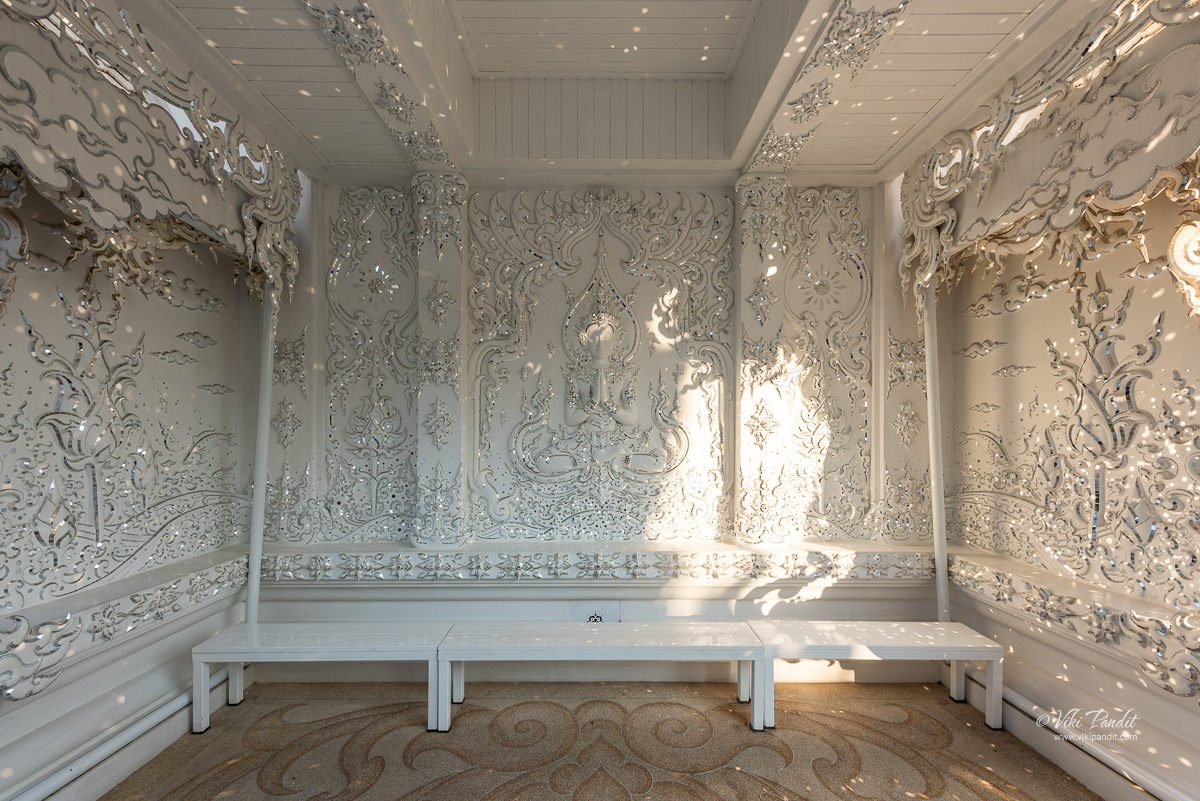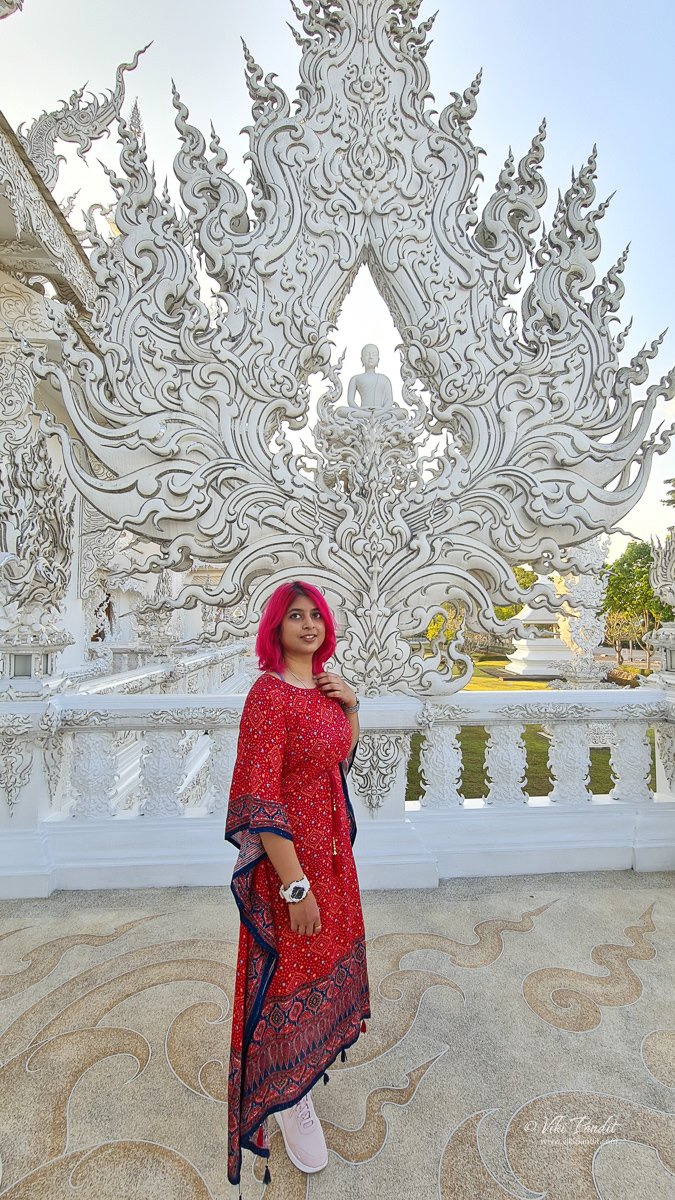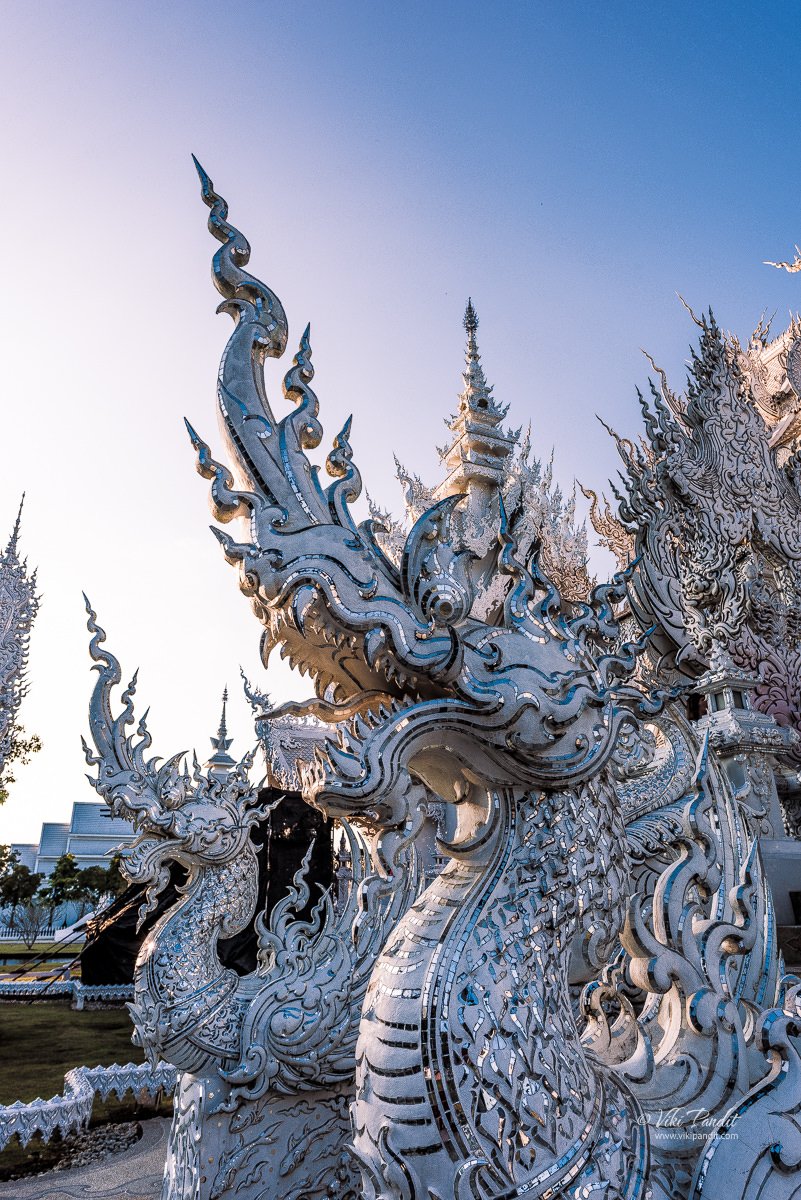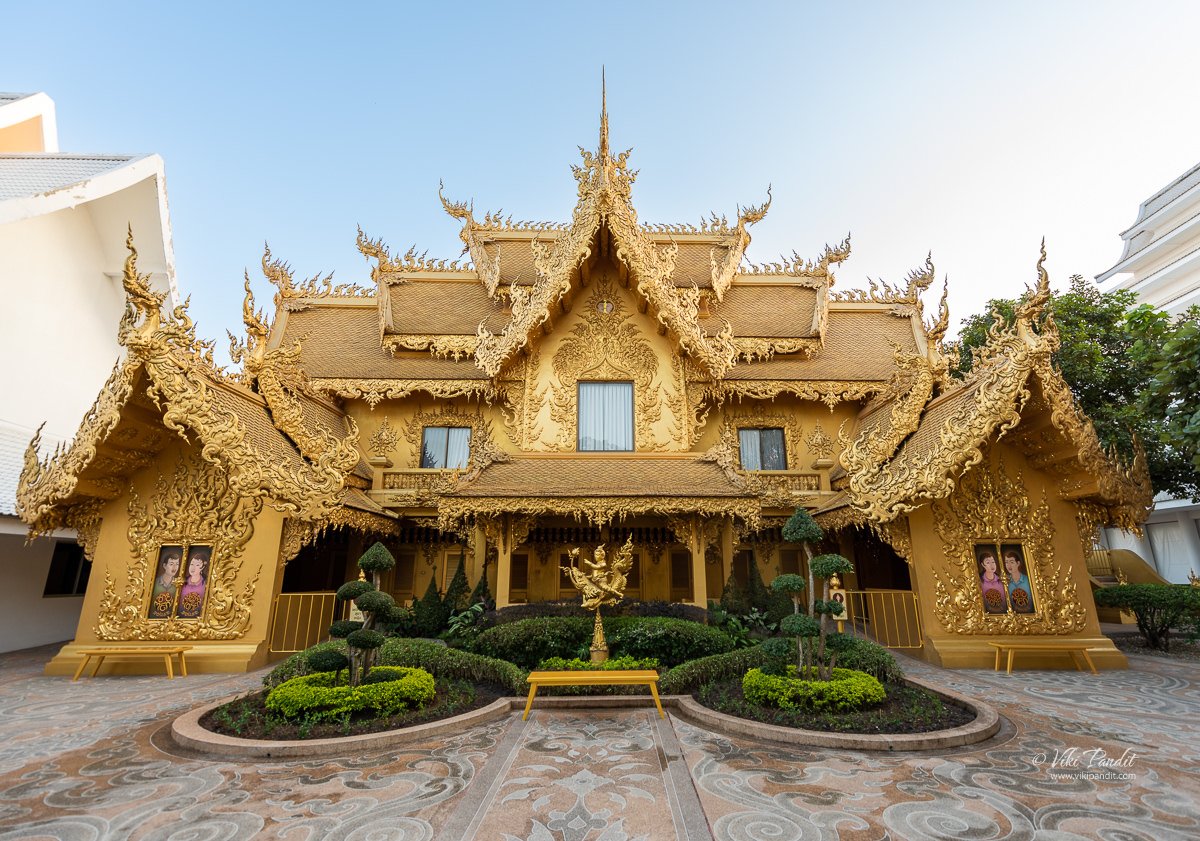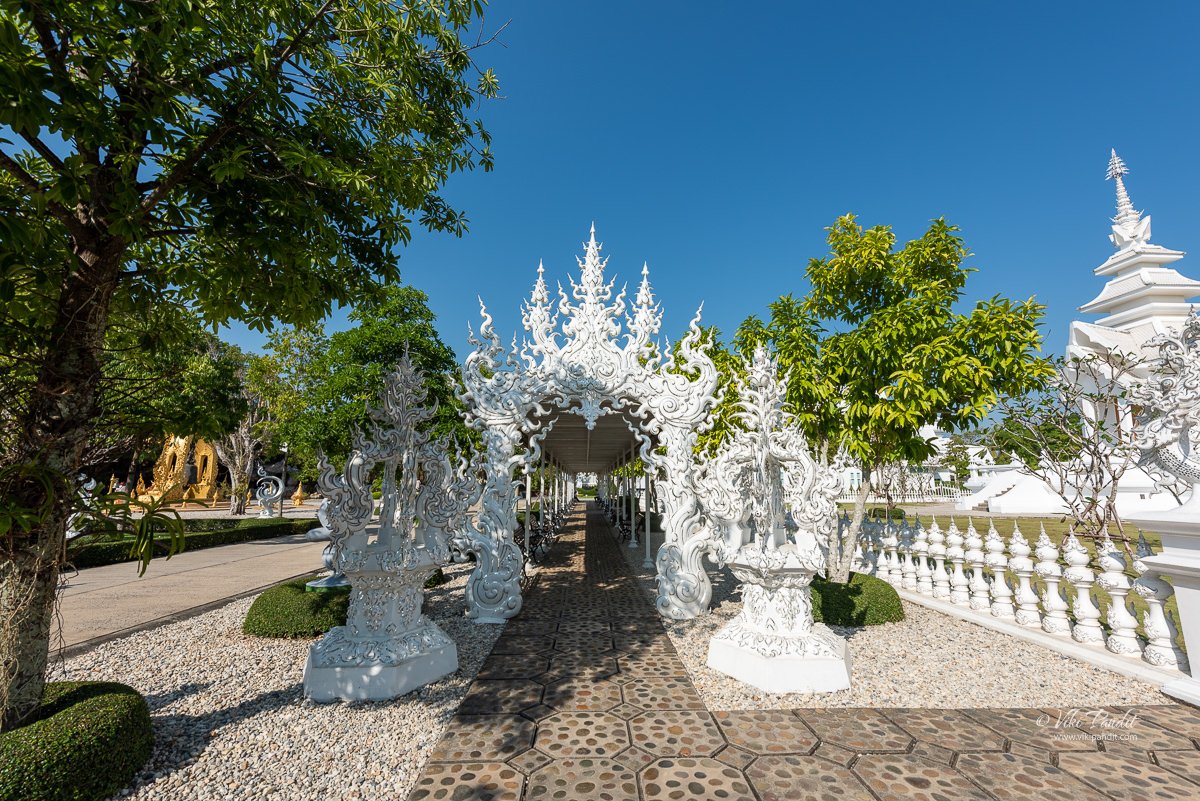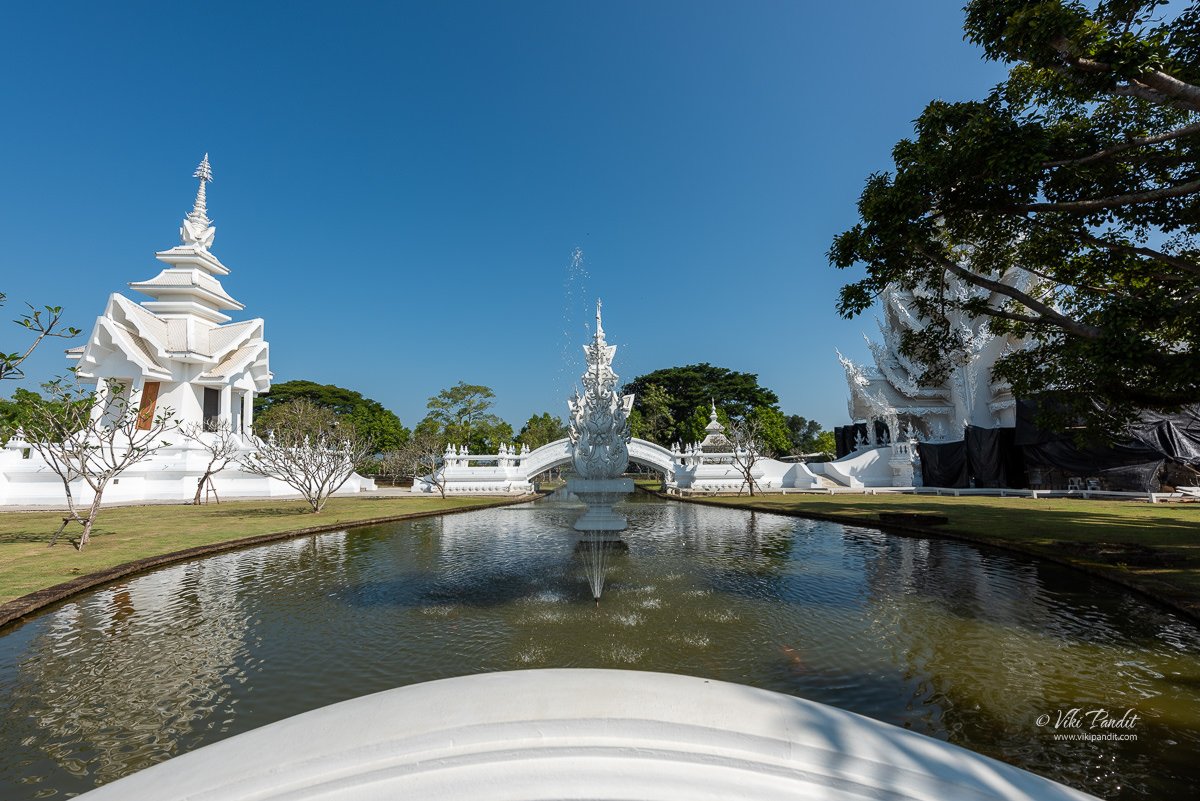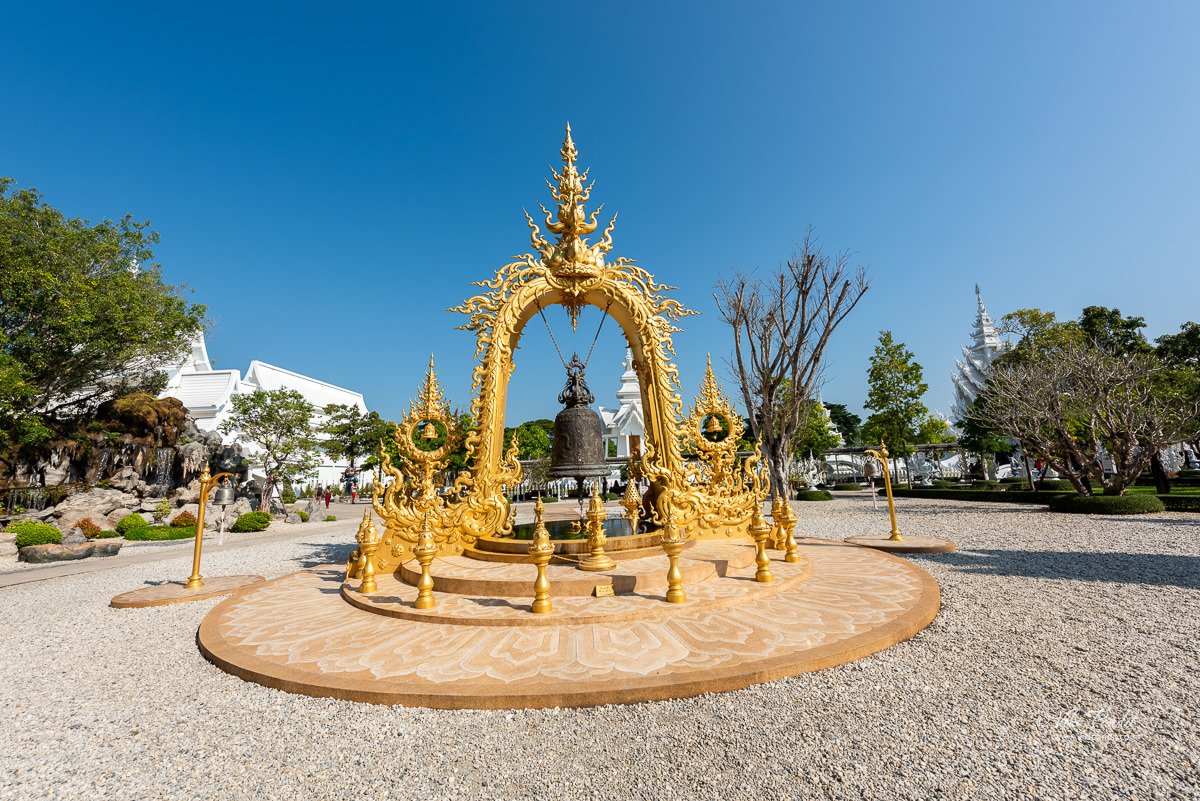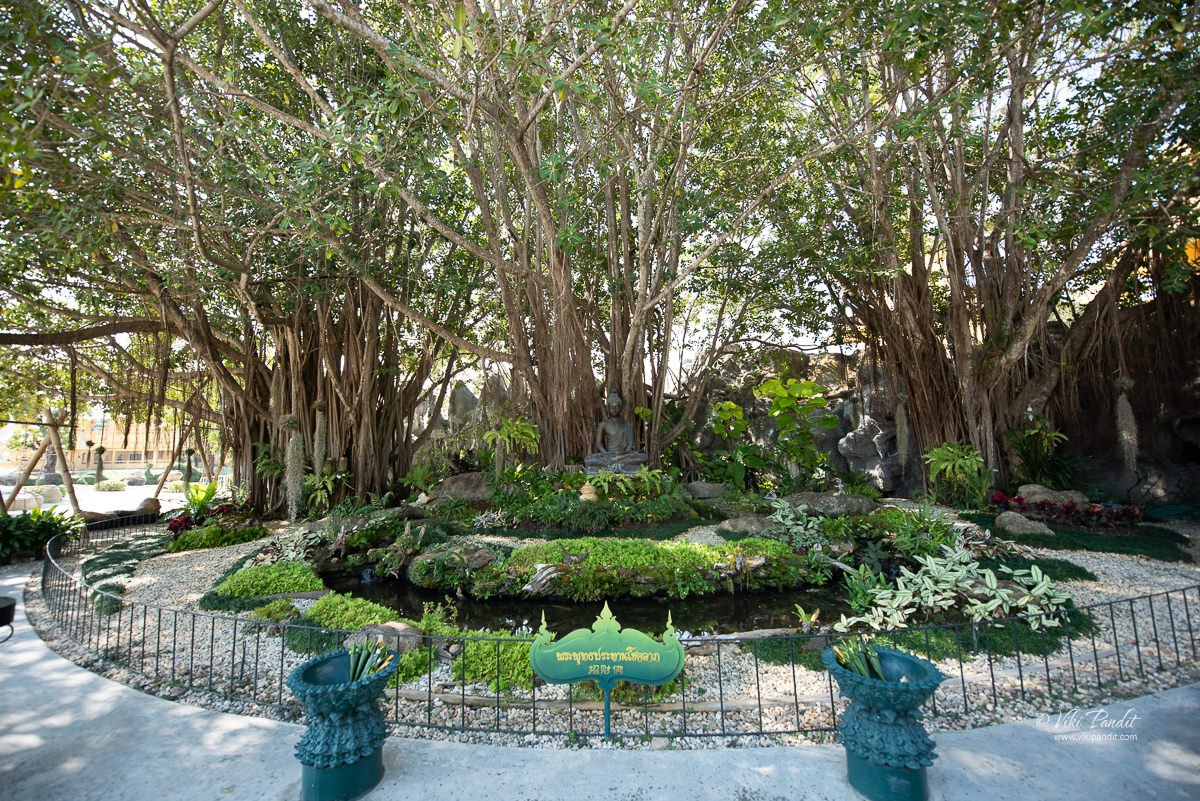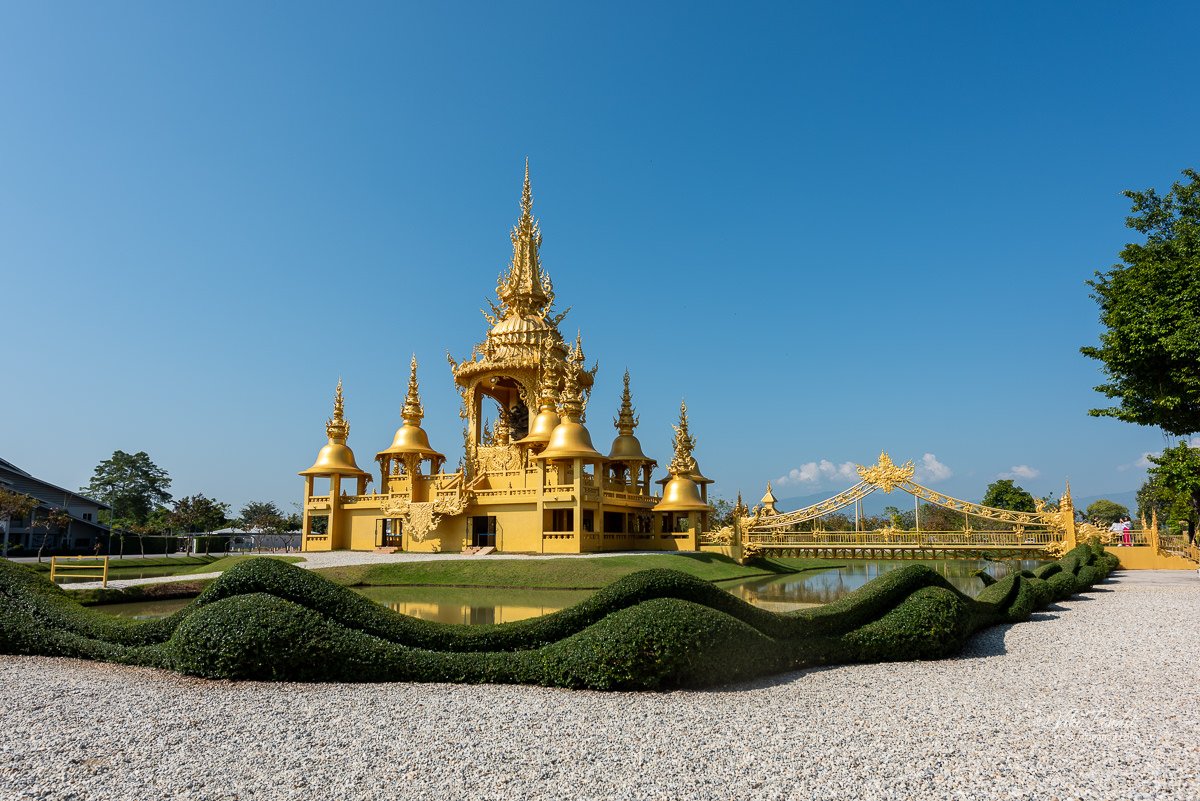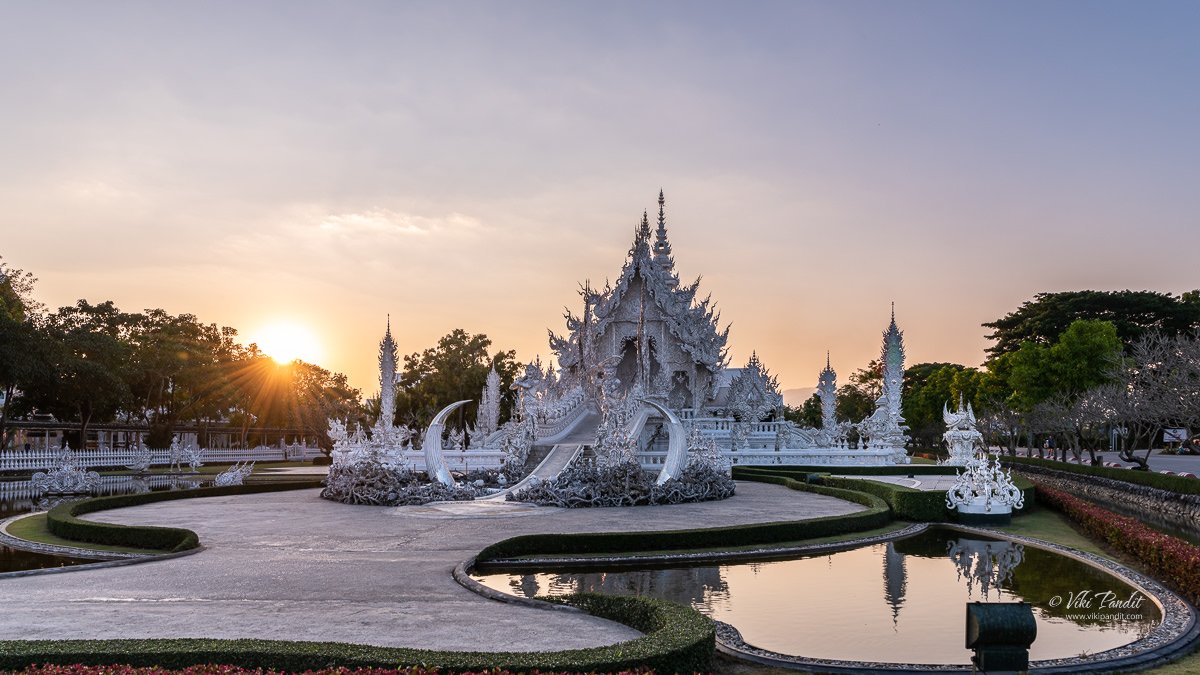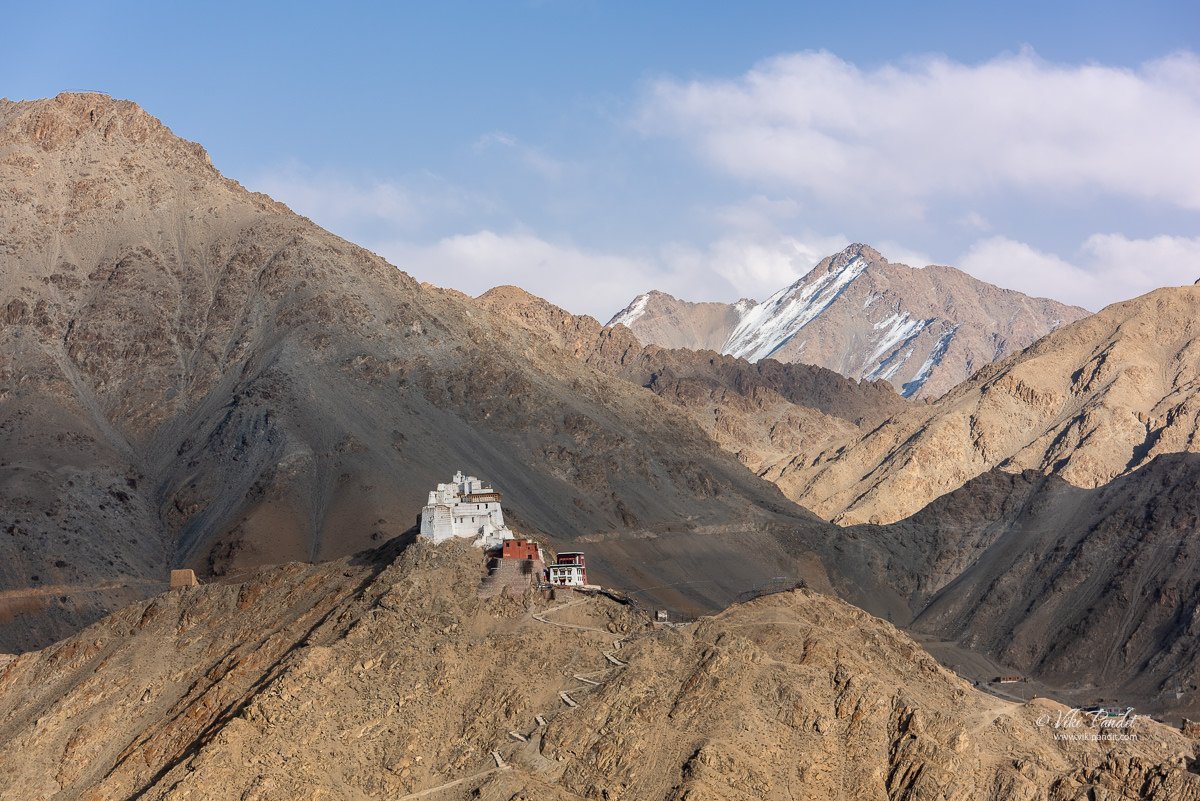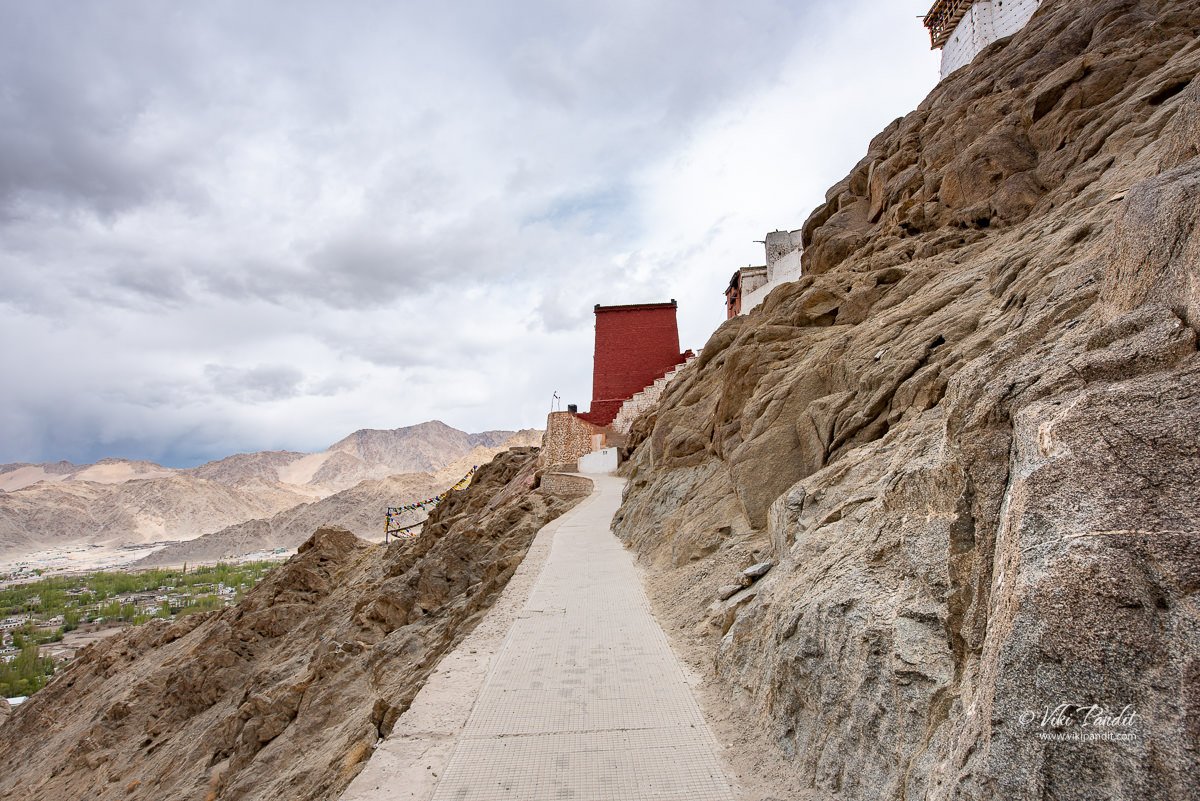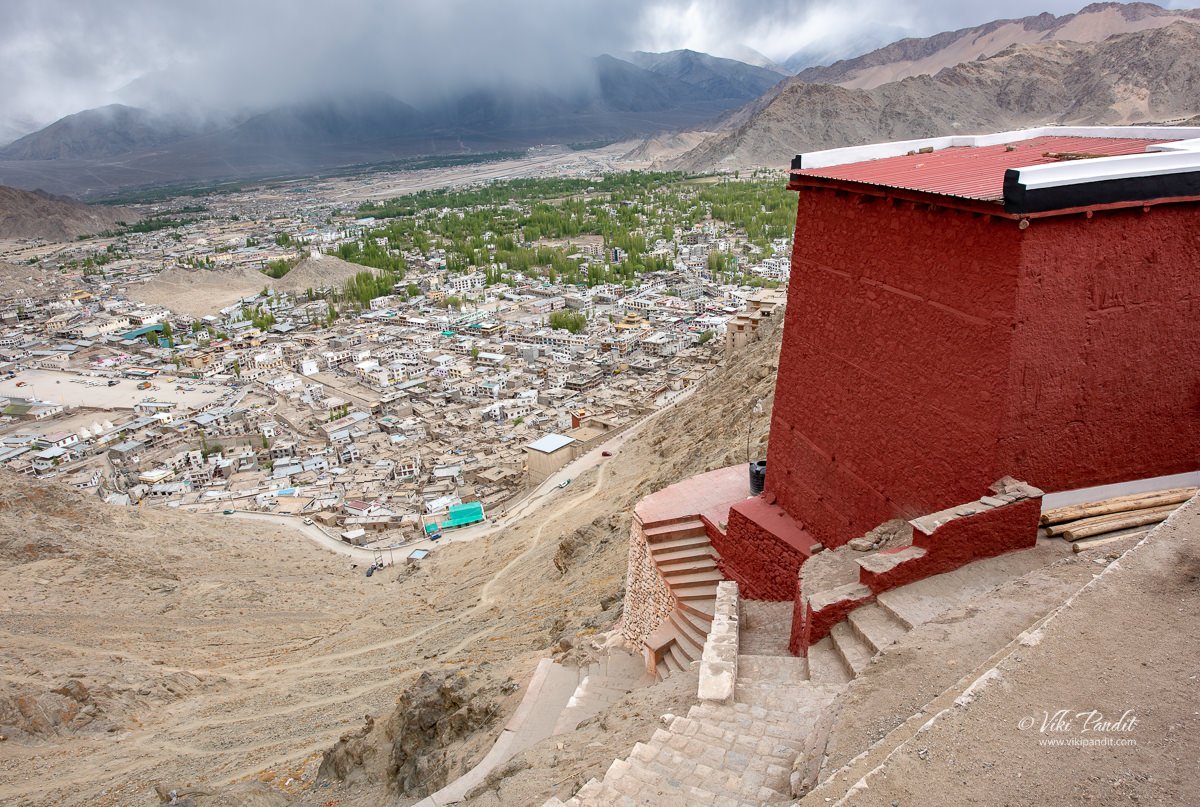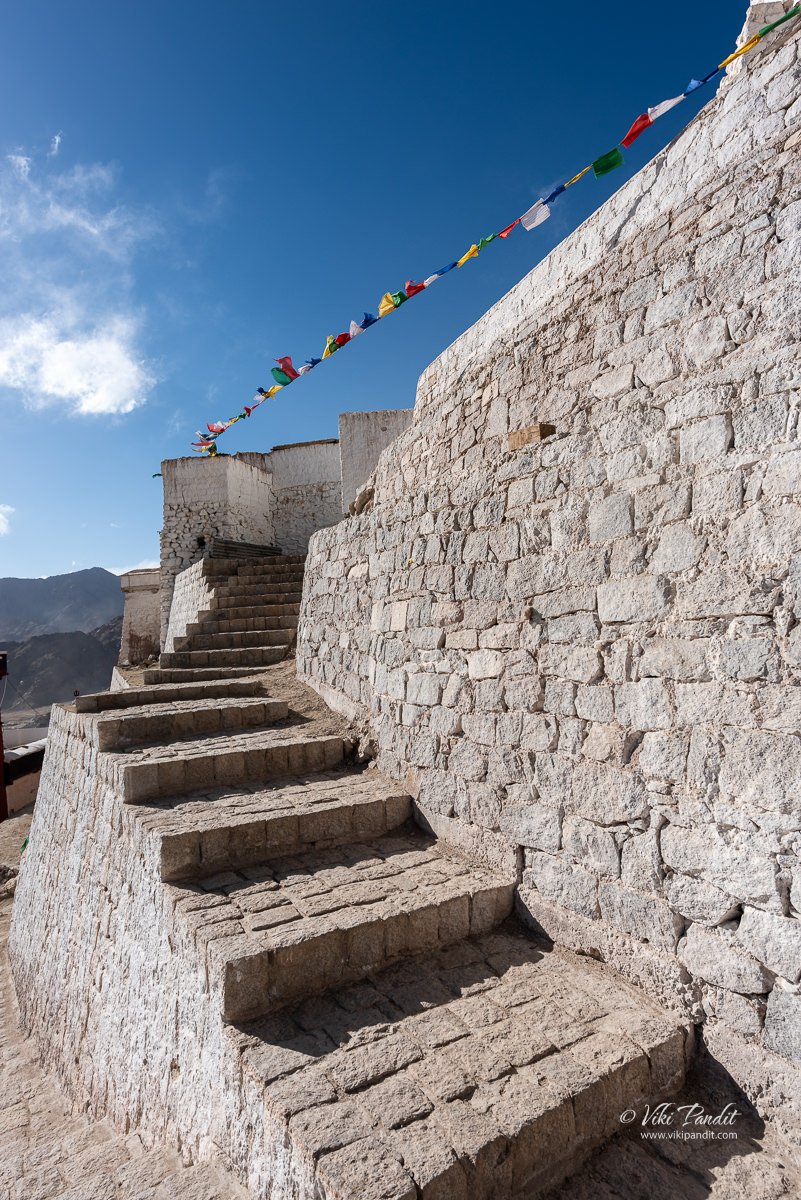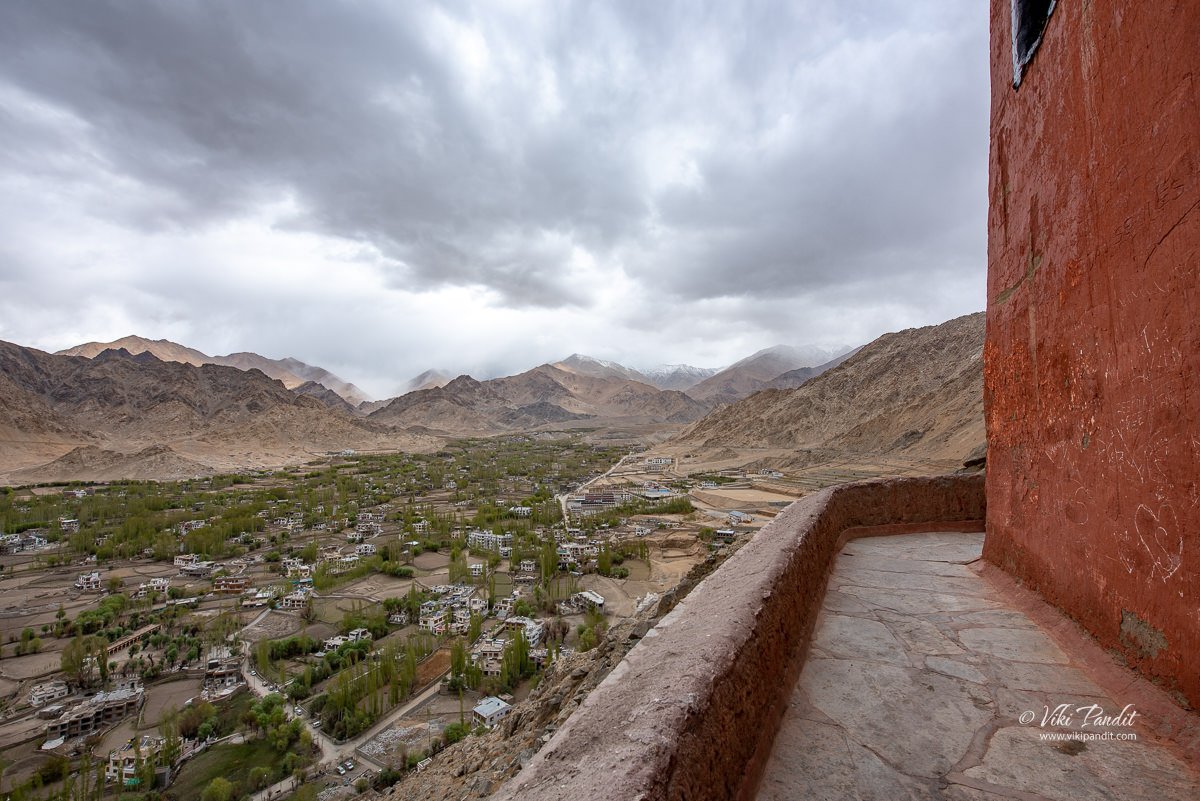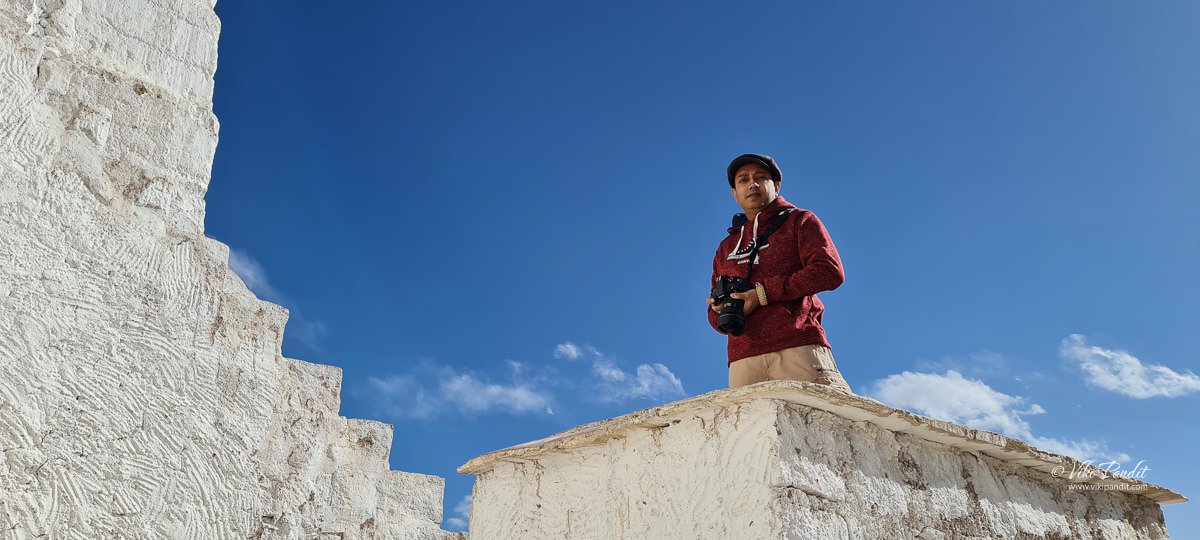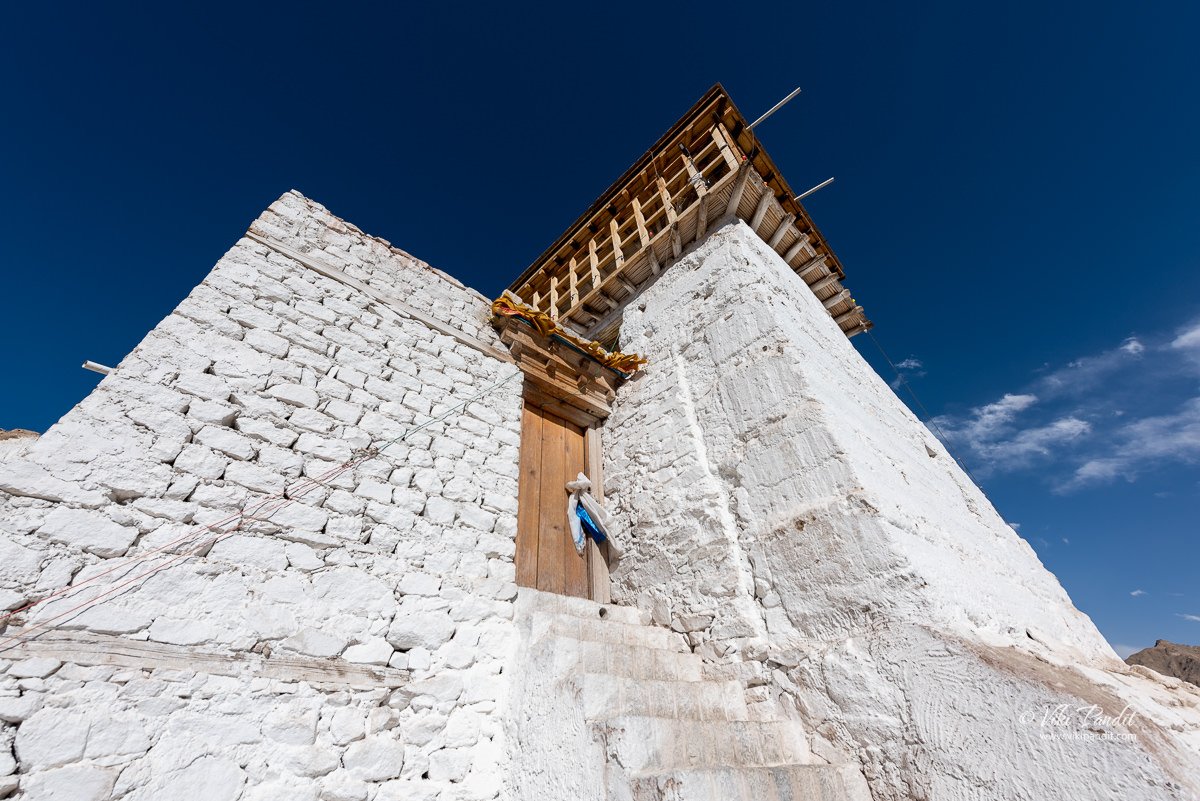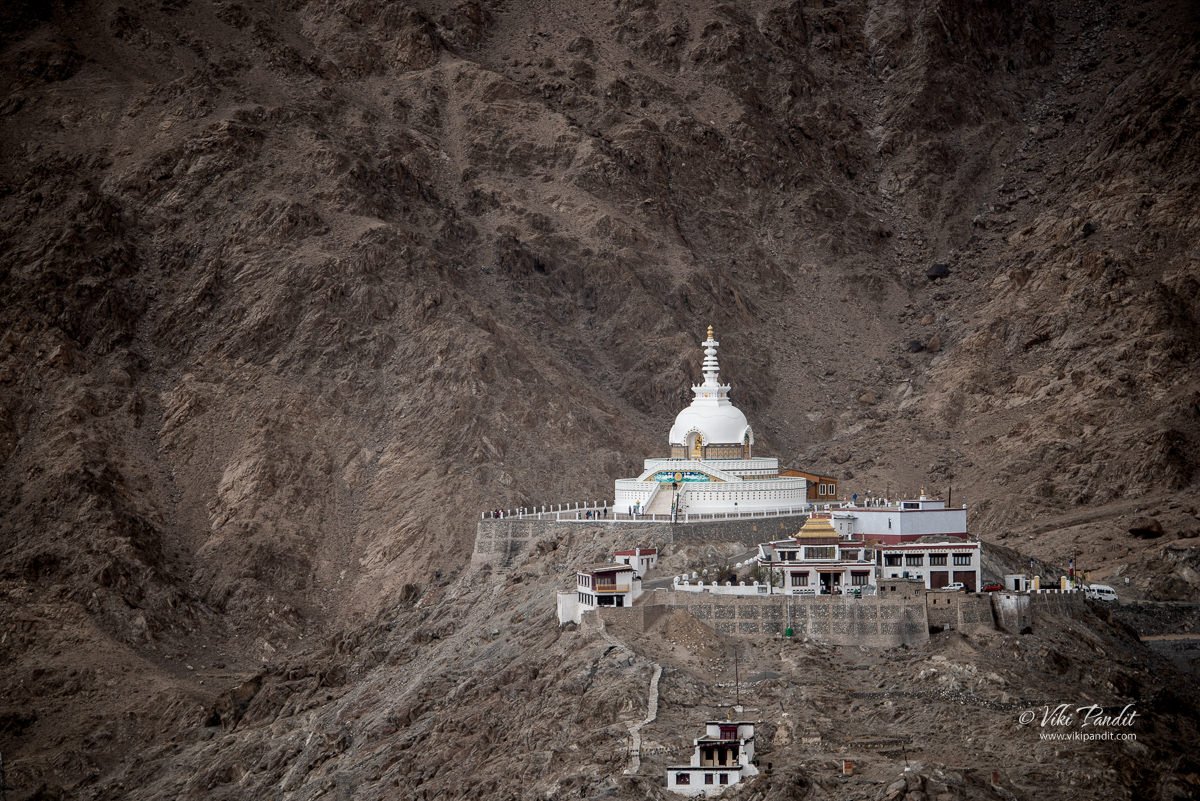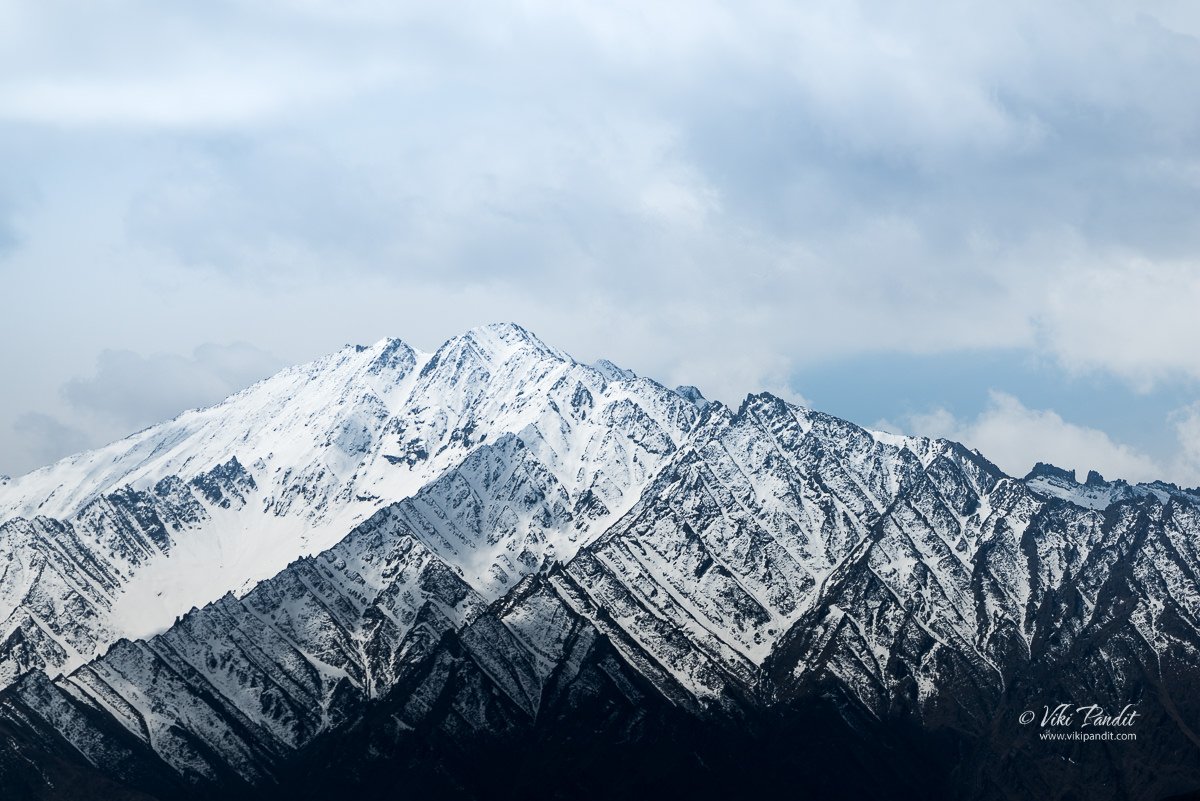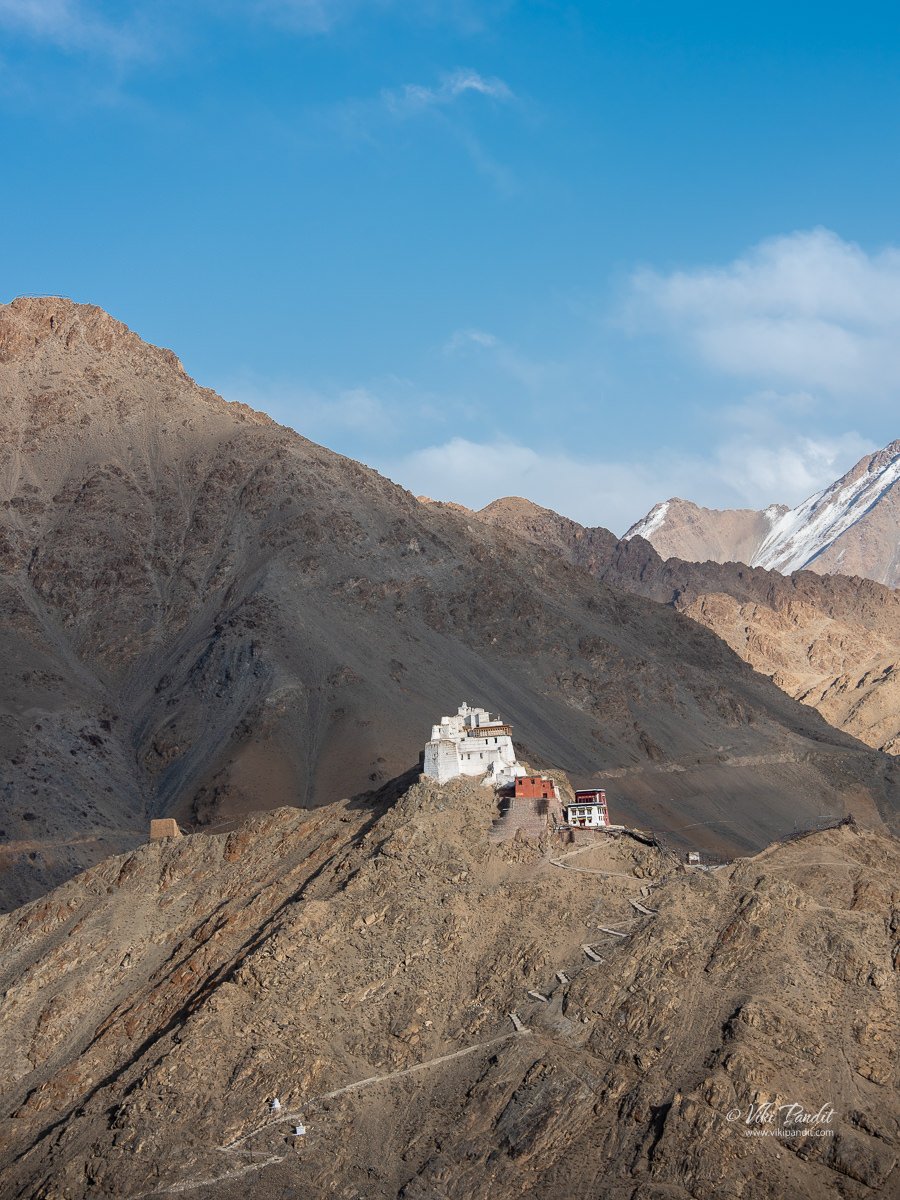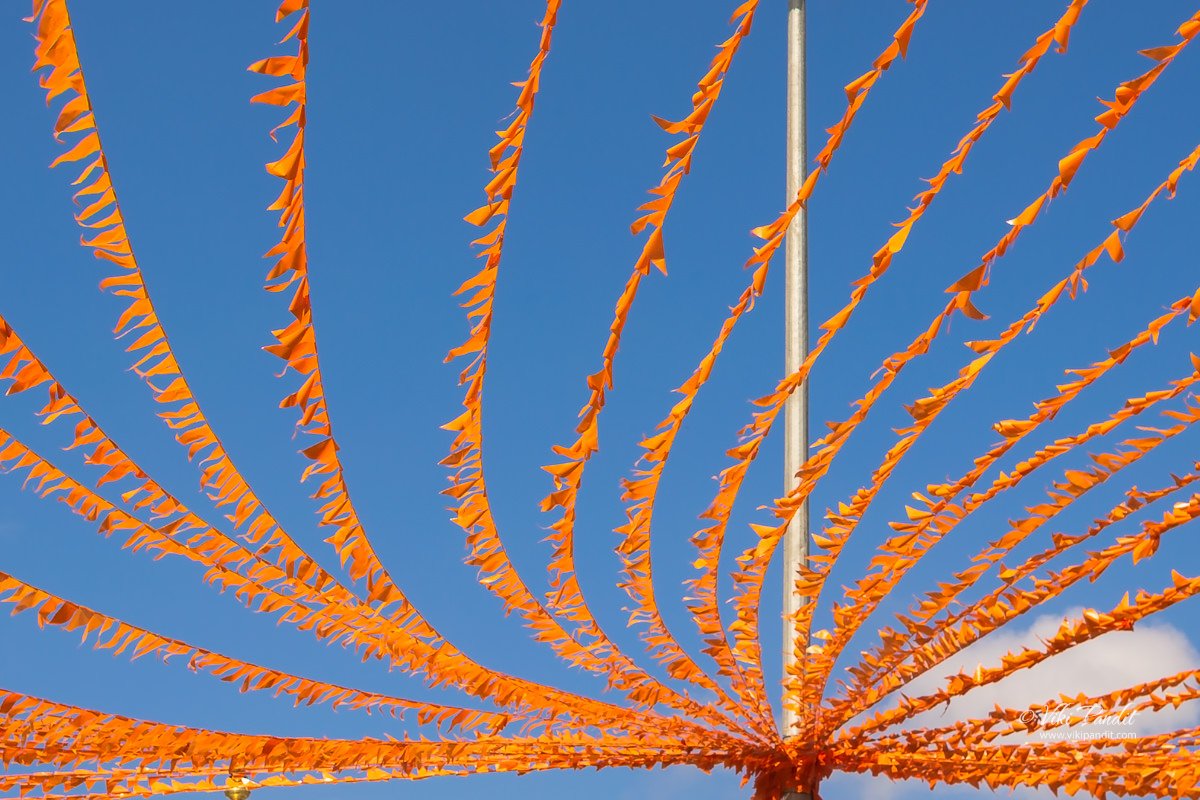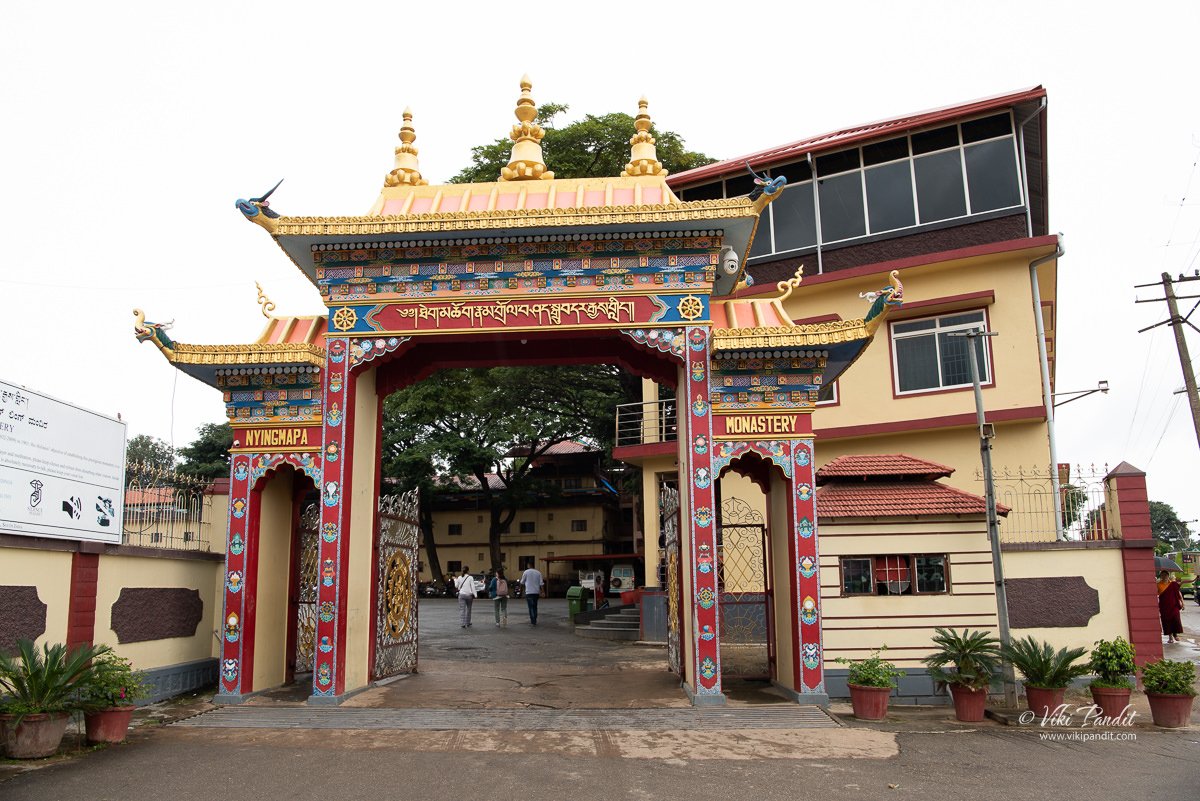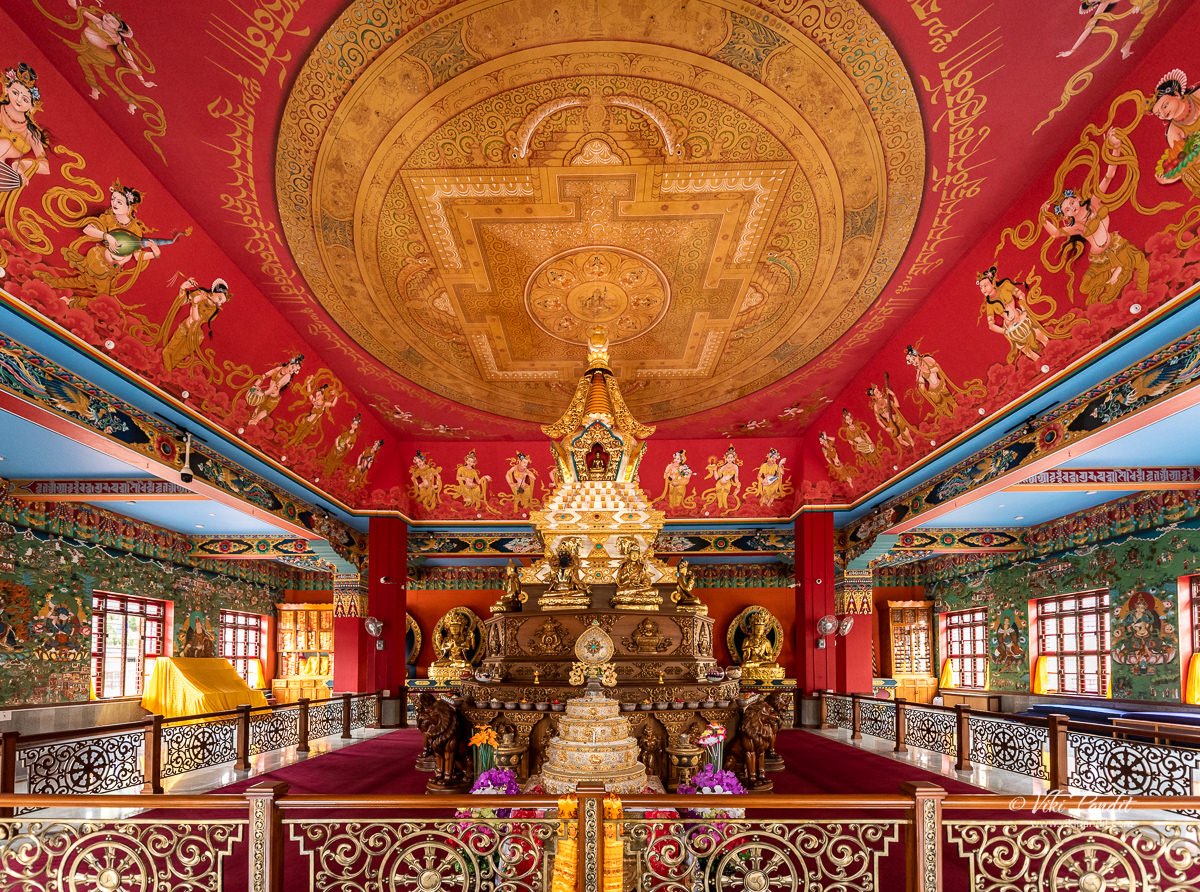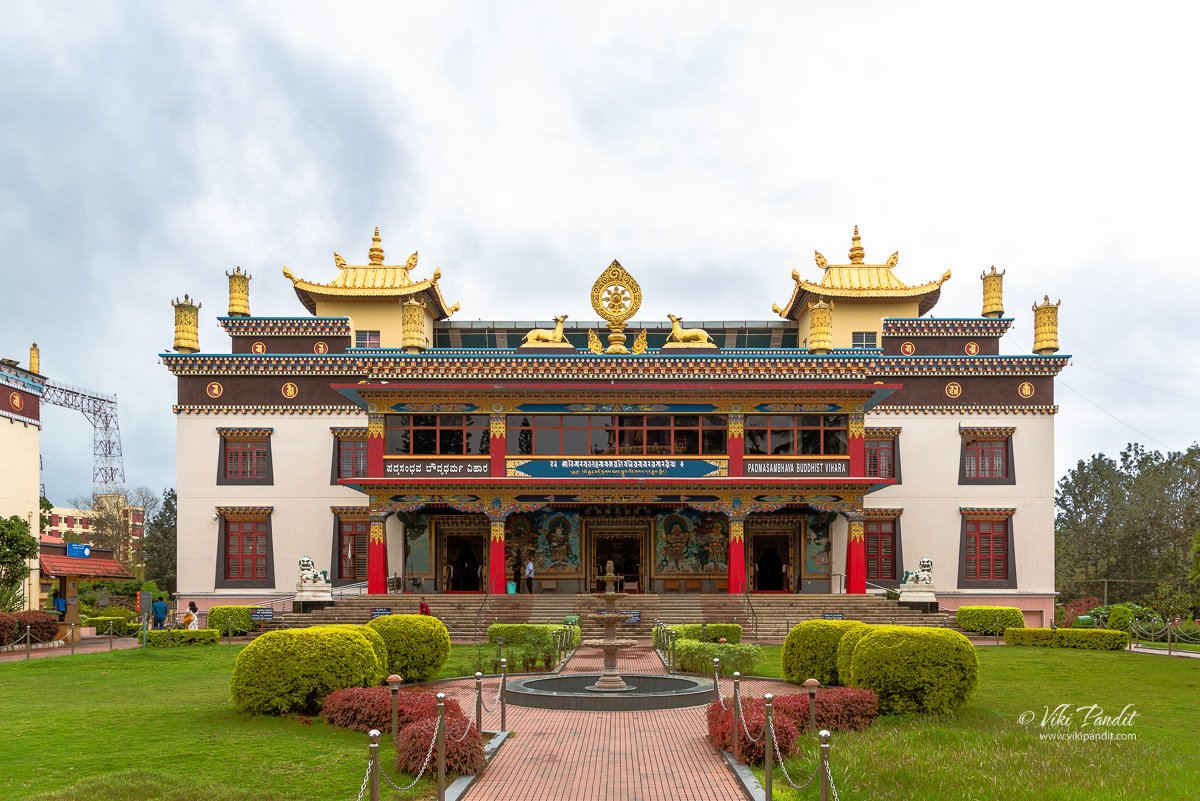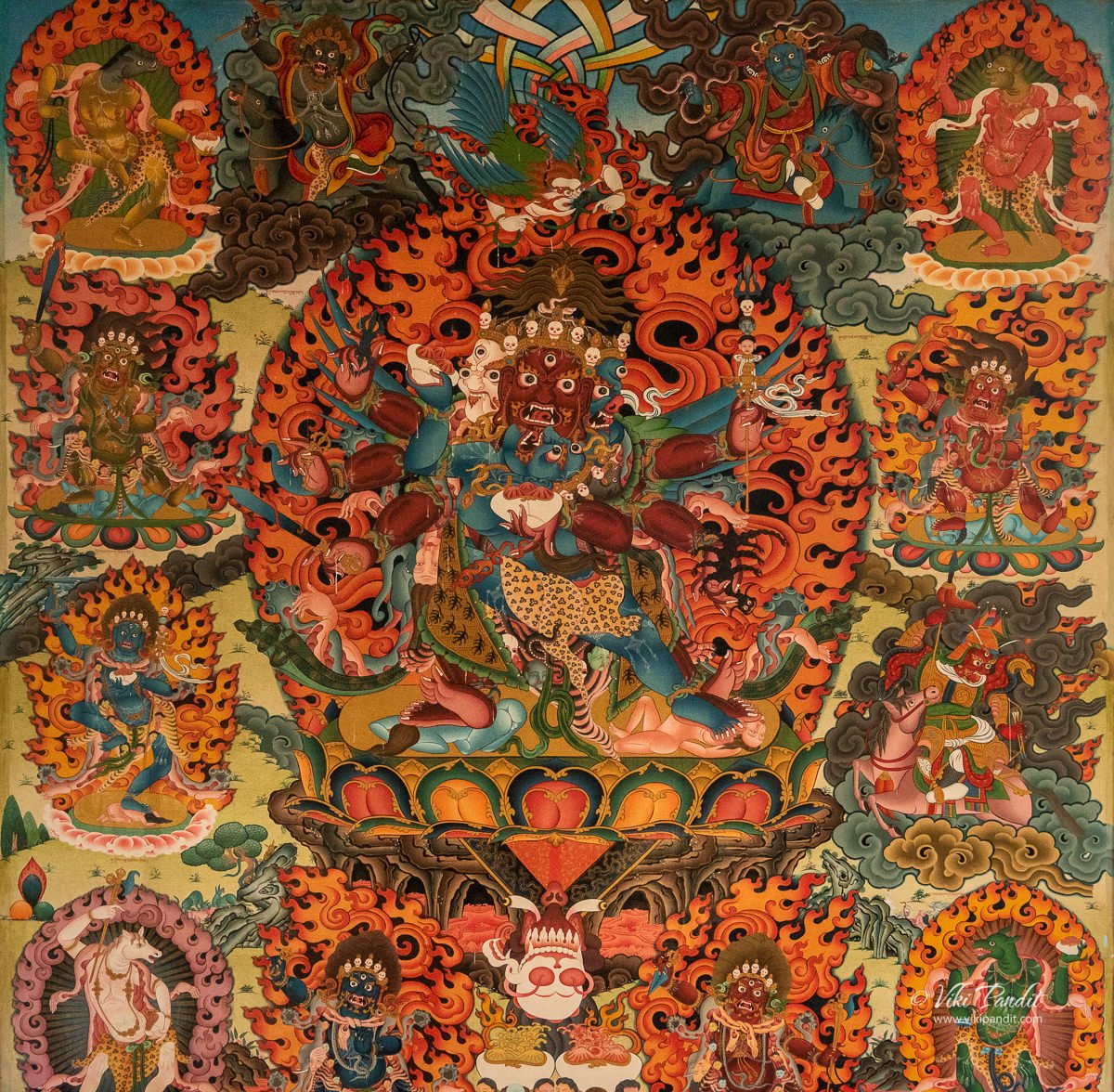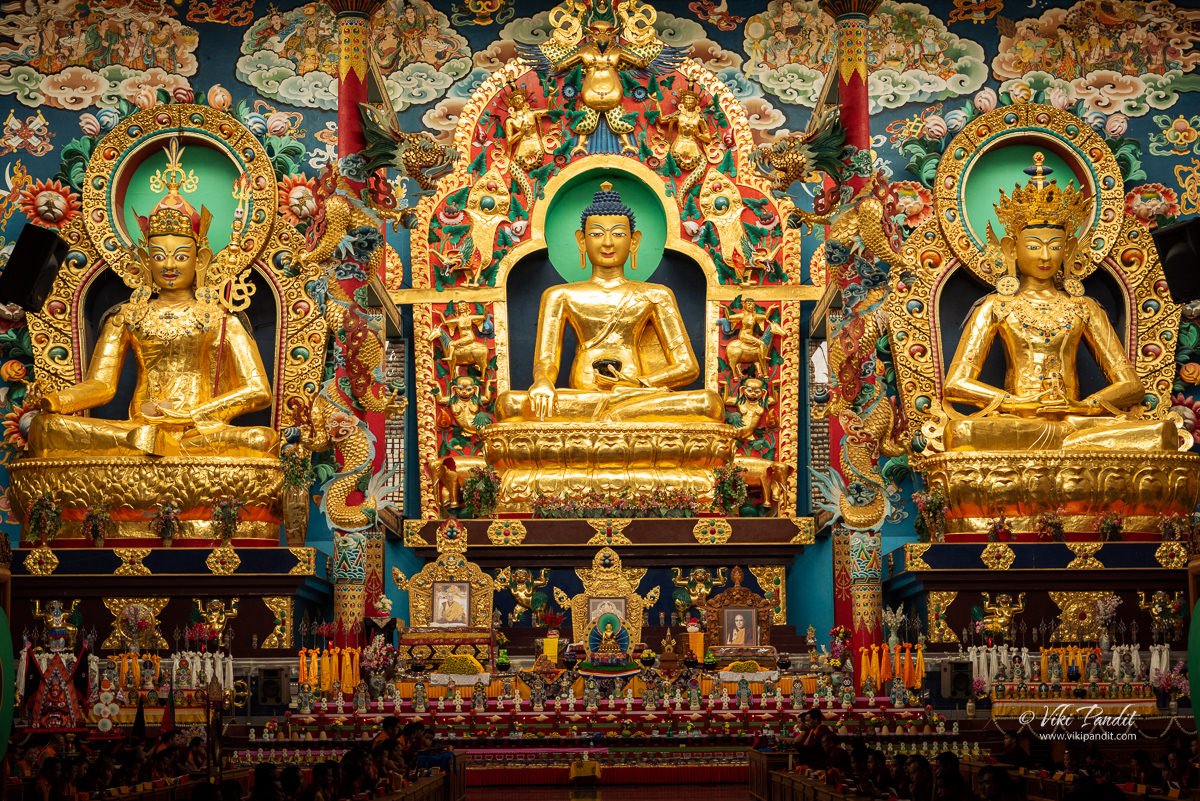Nestled in the serene landscape of Chiang Rai, Thailand, Wat Rong Khun, commonly known as the White Temple, is a contemporary Buddhist temple. The temple’s design is unique and striking, featuring an intricate structure covered in white plaster and adorned with pieces of mirrored glass. This reflects the sun’s rays, creating a dazzling effect that symbolizes the purity and wisdom of Buddha.
The temple was designed and built under the visionary guidance of renowned Thai artist and architect Chalermchai Kositpipat and is proof of his artistic brilliance. Chalermchai’s vision has not merely bestowed upon the local residents a place of worship but has also transformed it into a sought-after tourist destination.
The white temple had been on my radar since the time a fellow photographer posted some pictures on 500px several years ago. When my dream of visiting Thailand was finally becoming a reality, there was no way I would miss this opportunity to visit one of the most iconic complex in all of Thailand.
Wat Rong Khun is not just a religious site but a masterpiece that has captivated the hearts of visitors worldwide. Chalermchai has been successful in creating a temple that not only serves as a place of worship but also as a work of art that transcends cultural and religious boundaries. Tourism in Thailand is seen as a way to increase the country’s reputation in the world. as a source of national pride and a modern symbol of the nation, the temple has now become an iconic landmark within the province and, to a significant extent, across the entire country.
The temple opens to the public after 8 am but since it is not hidden behind any enclosure, if you wish to observe the temple sans the crowds, you can come anytime in the early morning. There is a small shopping arcade nearby where you can wait for the temple to open over a fresh glass of fruit juice. The outer premises of the temple is decorated with statues of demons and other supernatural beings, manga characters, as well as depictions of several action heroes like Venom and Predator.
Even common signages like a No-smoking sign have been tackled in a creative way making them part of the architectural design of the temple.
Brief history of White Temple
Before we go into the intricacies of the temple it is important to know the name behind this masterpiece. Chalermchai Kositpipat was born in Chiang Rai. He is a renowned contemporary Thai artist and the visionary behind the iconic Wat Rong Khun, or the White Temple. His artistic journey has left an indelible mark on the cultural landscape of Thailand, blending traditional Thai artistry with modern expressions.
Built in the 1950s, Wat Rong Khun initially stood as one among numerous small village temples in Thailand. By the 1990s, this four-decades-old temple required extensive repairs. The dining hall and grand gate underwent reconstruction, supervised by Phra Khru Chakhriyanuyut, who also introduced a herbal sauna for the rehabilitation of drug addicts. Nevertheless, the main structure, known as the bot or ubosot, also demanded restoration, as it had become unsuitable for religious worship.
In 1996, the decision was made to demolish the old bot or ubosot to pave the way for a new hall. Regrettably, a year later, the financial crisis of 1997 gripped the entirety of Thailand. Faced with economic hardships, the villagers lacked the resources to contribute to the reconstruction efforts, resulting in the abandonment of the project and leaving them without a bot. Given that Rong Khun is his hometown, Chalermchai, determined to lend a helping hand, took charge of the situation.
In the late 1990s, he embarked on the ambitious project of transforming the decaying Wat Rong Khun into a masterpiece that stands as a symbol of Thai culture and spirituality. Wat Rong Khun is not only a place of worship, but also a symbol of Ajarn Chalermchai’s vision of a “new art form” in which traditional Buddhist teachings are blended with modern ideas and images.
The construction of the new temple was undeniably a monumental undertaking, unparalleled in scale across Thailand. The initial temple occupied 4 rai, equivalent to 6400 m2, a typical size for a village temple. However, Chalermchai’s expansive vision surpassed this modest scale, necessitating additional space. To accommodate his grand design, surrounding rice paddies were procured and integrated into the temple grounds. Consequently, the temple now spans 10 rai and 100 square wa, equivalent to 16400 m2, making it notably larger in comparison to other village temples in Thailand.
The construction of Wat Rong Khun began in 1997 and most of it was ready by 2008 when it was opened to the public. The temple is a testament to his artistic genius, featuring intricate handcrafted details, stunning architecture, and a fusion of Buddhist symbolism with contemporary themes. Kositpipat, however, has an even mega plan for the site. Once finished, the complex of the White Temple will comprise nine structures, incorporating the current ubosot, a relics hall, a meditation hall, an art gallery, and residential spaces for monks. By the time of writing this article, the project has cost him more than $30 million of his own money. If all goes well, the temple should be finished by 2070.
White Temple
The temple ground is rectangular, with a walkway as its main east-west axis. The ground is then divided into three sections, two on the southern side of the walkway and one on its northern side. The temple currently has nine main buildings, three in each section and some other minor ones. These three main sections are the Karawat, the Sanghawat and the Buddhawat. The Karawat is the section for the laity, with a shop, a bathroom and a preaching hall. The Sanghawat, the section for the monks, has the crematorium, the kuti or the residence for the monks, and a hall of contemplation. The Buddhawat is the section for the Buddha, where we find the bot, the pavilion of relics and the pavilion of images.
Buddhawat
The Buddhawat occupies the entire northern expanse of the temple, separated from the Karawat and the Shangawat by a white picket fence. Within this section, three principal structures – the bot, the pavilion of relics, and the pavilion of images are aligned in a straight formation, with two bridges interspersed between them. This arrangement is complemented by various auxiliary constructions, forming an intricate and ornamentally adorned ensemble. The Buddhawat features an array of embellishments, including fountains, water pools, freestanding statues, meticulously tended trees, and bridges one situated in front of the bot and another linking the pavilion of images and the pavilion of relics along with other decorative elements.
The bridge of “the cycle of rebirth”
Once we crossed the gate into the Buddhawat, we were directed towards a path leading to the “bridge of rebirth.” It is the most iconic feature of Wat Rong Khun, which leads to the main temple. The “Bridge of the Cycle of Rebirth,” is a long, white, and narrow bridge that stretches over a small pond. It is covered in intricate designs and symbols, including depictions of demons and other figures from Buddhist and Hindu mythology.
Before reaching the bridge, however, the visitors need to walk over Mara’s mouth, in which you can find hundreds of hands as well as a few feet and faces of people damned to hell. These hands and feet are close to the visitors, making this a physical and graphic journey through hell. This section of the temple attracts a lot of attention.
The bridge represents the journey from the cycle of birth and death to the path of enlightenment. The hands reaching up from the depths of hell symbolize the struggle to overcome worldly desires, while the heavenly figures on the other side signify the attainment of spiritual liberation. The bridge serves as a symbol of the journey from the material world to the spiritual world, and the process of attaining enlightenment.
The demons are meant to represent the obstacles one must overcome in order to attain enlightenment. The white color of the temple symbolizes the purity of the Buddha and the glass and mirror decorations are meant to represent the Buddha’s wisdom and the reflections of the visitors.
After traversing the representation of hell, visitors encounter two stylized demons, positioned on either side of the Bridge of Rebirth. While statues of demons are commonly seen in Thai temples, the ones at Wat Rong Khun differ significantly from the more conventional depictions typically found in expansive, traditional Thai temple grounds. The demons here at Wat Rong Khun bear a closer resemblance to characters found in graphic novels rather than adhering to the conventional styles of traditional Thai art.
Visitors must cross the Sukhawadee Bridge to enter the temple, representing the transition from the material world to the spiritual world. As they walk on the bridge, they pass by the statue of demons and other figures, which serves as a reminder of the negative qualities and obstacles that one must overcome in order to achieve enlightenment.
Gate of Heaven
Upon crossing the bridge, visitors reach the “gate of heaven,” protected by two creatures symbolizing Death and Rahu, determining the fate of the deceased. In front of the ubosot, numerous meditative Buddha images are displayed.
Below the gate, you can find a cute little pond with Koi fishes swimming in the clear transparent waters.
A statue of a Kinnaree is located just before the main hall of the temple. The statue is depicted with a serene expression and is holding a lotus flower, which is a symbol of spiritual purity and enlightenment. This statue serves as a reminder of the beauty and grace that can be attained through spiritual practice.
A Kinnaree is a mythical creature that is typically depicted as a half-human, half-bird being. In Thai Buddhism, the Kinnaree is associated with beauty, grace, and spiritual purity. The Kinnaree is often depicted in art and architecture, particularly in temples, as a symbol of the spiritual journey and the attainment of enlightenment.
In addition to the statues, the Kinnaree is also depicted in various other forms of art and decoration throughout the temple, such as in the murals and frescoes. This serves as a reminder of the importance of art and culture in Buddhism, and how it can be used to convey spiritual messages.
Ubosot
As I followed the only path available, I crossed the enchanting Bridge of Rebirth, finding myself standing in awe before the most captivating structure on the temple grounds – the Ubosot (main hall). The leaf-like patterns at the top of the bridge unfolded a story of Mount Meru, while the fountain-like structures beneath, nestled in the pool, mirrored the embracing mountain range.
My eyes were drawn to the four flame-like structures at the corners of the bot, each adorned with small human figures symbolizing the Buddha’s early disciples. As I gazed up at the pinnacle of the bot, the roof finials took on the shapes of stylized animals, gracefully representing the four elements: fire, water, air, and earth. The intricate details painted a vivid narrative, making my journey through Wat Rong Khun an immersive and personal experience.
The temple is also adorned with pieces of glass and mirrors, which reflect the sunlight and give the temple a shimmering appearance. The main hall of the temple, known as the “Ubosot,” features a statue of the Buddha made of black glass and gold leaf.
The Ubosot is a large, all-white building that serves as the center of the temple complex. It is the place where the main altar is located and where ceremonies and rituals are held. The Ubosot is adorned with intricate details and symbols, including depictions of demons and other figures from Buddhist and Hindu mythology. You will have to carry your shoes in your hand while entering the Ubosot.
The main attraction of the Ubosot is the statue of the Buddha made of black glass and gold leaf. The statue sits in the center of the hall and is surrounded by other statues and sculptures. Photography is not allowed inside. The statue is a representation of the Buddha’s teachings and serves as a reminder of the path to enlightenment.
A large mural in front of the statue depicts the struggle between Buddha and the demon Mara. It represents the final conflict of Lord Buddha’s own demon before he attained enlightenment. The eyes of the demon have George Bush and Bin Laden painted in the pupil area. When asked about these depiction, Ajarn Chalermchai had responded that it was to caution both as violence hurts entire humanity.
The Ubosot also features several other statues and sculptures, including statues of the Hindu god Ganesha and the bodhisattva Avalokiteshvara. These statues serve as a reminder of the universality of spiritual teachings and the importance of transcending cultural boundaries in the pursuit of enlightenment.
Once you come out of the Ubosot, you can find a small enclosure that seats about three people at a time. Here you can get back into your shoes.
From here you can continue on the circumambulatory passage going around the temple hall. On both sides of the main hall, there are beautiful depictions of Buddha sitting inside a lotus.
Just behind the main hall lies the Buddha Relics Tower. But it was closed at the time of my visit
In addition to the demon head and multi-armed statue, the Wat Rong Khun also features other monster idols such as a giant serpent and a demon emerging from the ground. These statues serve as a reminder of the dangers and obstacles that can arise on the path to enlightenment, and that one must always be vigilant in order to overcome them.
To come out of the temple you have to come out through this southern gate.
The exit gate features two of the most beautifully designed dragons.
Coming out of the main temple you will find yourself in front of another beautifully designed golden building. It is a restroom. Of course, when everything else is following the same pattern why not the restroom as well?
Just beside the restroom, there is an intricately decorated walkway that leads to the farther areas of the temple.
As we walked through the walkway, on the right we could see certain areas of the temple that were undergoing renovation.
When this area is finished, it will lead the visitors directly to the Buddhist Tower connected by a small bridge known as the Sukhawadee Bridge.
Buddhist Tower
Belfry at Wat Rong Khun
Dhamma Garden
Ganesha Temple
One of the most prominent symbols is the statue of Ganesha, the Hindu god of wisdom, knowledge and new beginnings.
Ganesha is often depicted as a figure with an elephant head and a human body. He is known for his intelligence and his ability to remove obstacles, making him a popular figure in Hinduism and Buddhism. Ganesha is often invoked at the beginning of any new venture or undertaking as a symbol of good luck and success.
At the Wat Rong Khun, the statue of Ganesha is placed prominently at the entrance of the temple. It serves as a reminder to visitors to approach their spiritual journey with wisdom and knowledge and to be open to new beginnings. The statue also serves as a reminder that obstacles may arise on the path to enlightenment, but with the guidance of Ganesha, one can overcome them.
The statue of Ganesha at Wat Rong Khun is also unique in its design as it is fused with traditional Thai art and culture. It showcases the blending of different cultures and religions, and how they can coexist in harmony. The statue symbolizes the universality of spiritual teachings and the importance of transcending cultural boundaries in the pursuit of enlightenment.
Wat Rong Khun has become a major tourist attraction, drawing visitors from around the globe to Chiang Rai. The unique blend of traditional Thai spirituality and contemporary artistry has created a cultural landmark that transcends the boundaries of religious affiliations. The temple has not only contributed to the local economy but has also elevated Chiang Rai’s status as a must-visit destination in Thailand.
The temple’s popularity has led to increased tourism, benefiting local businesses and creating employment opportunities. Additionally, the revenue generated from entrance fees and donations is often reinvested into the maintenance and restoration of the temple, ensuring its continued splendor for future generations.
However, Wat Rong Khun has also been the subject of controversy and criticism. Some have criticized the temple for its commercialization and the inclusion of non-Buddhist elements in its design. Others have raised concerns about the temple’s environmental impact, as it was built on a rice field and required the excavation of a large area of land. Some also criticized the temple for its lack of religious significance, as it is primarily used as an art exhibit.
Despite the criticism, Wat Rong Khun continues to be a major tourist attraction and a symbol of Ajarn Chalermchai’s unique vision. The temple’s intricate and striking design, combined with its message of peace and unity, make it a worthwhile destination for those interested in Buddhism, art, and architecture. The temple is a reflection of the artist’s creativity, originality, and his passion for conveying the Buddhist teachings in a modern way. Wat Rong Khun is a thought-provoking and inspiring place that challenges traditional notions of Buddhism and art.
After thoroughly explorig the Wat Rong Khun, we walked into the Karawat gift shop. Unlike the usual gift shops associated with temples, especially those attracting tourists, Karawat breaks away from the norm. Instead of the typical religious-themed merchandise like amulets, Buddha statues, or Buddhism-related literature, this gift shop stands out by offering printed reproductions of the artist’s paintings, multiple biographies about him, as well as t-shirts and postcards featuring images of the temple itself.
What caught my attention was the absence of conventional Buddhist teachings and religious paraphernalia that are commonly found in gift shops at other temples. Positioned between a museum gift shop, showcasing art reproductions and coffee table books, and a typical tourist attraction gift shop with various t-shirts, caps, keychains, and trinkets, Wat Rong Khun’s gift shop is truly distinctive. It provides a unique opportunity to purchase printed copies of Chalermchai’s original works, adding an artistic flair to the temple visit. I myself purchased a canvas painting for my study room.
My heartfelt gratitude to each one of you who took the time to read through my article. If you liked it, please leave me a comment. If there are areas where you think I can enhance the storytelling, I would greatly appreciate your feedback.

